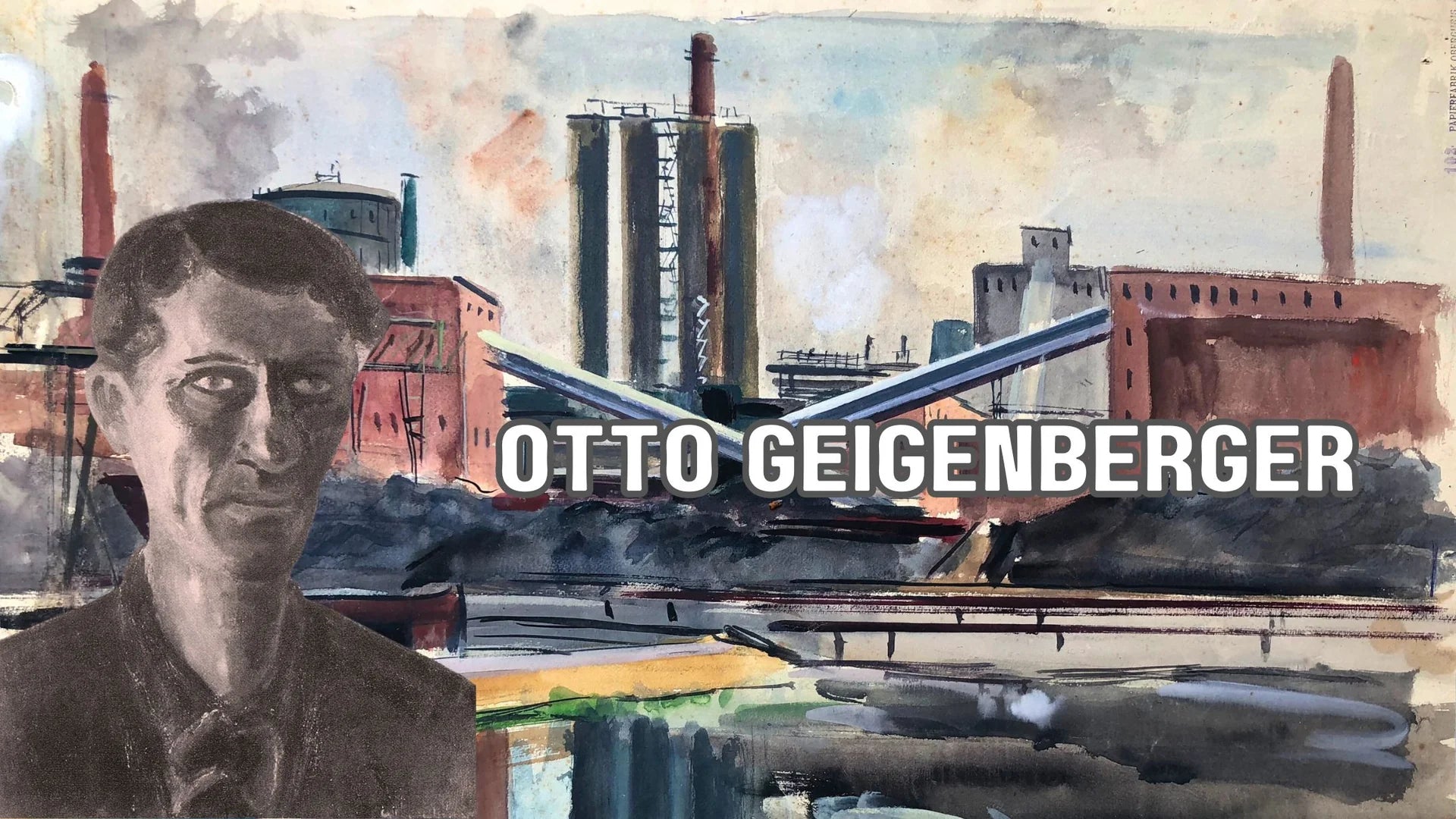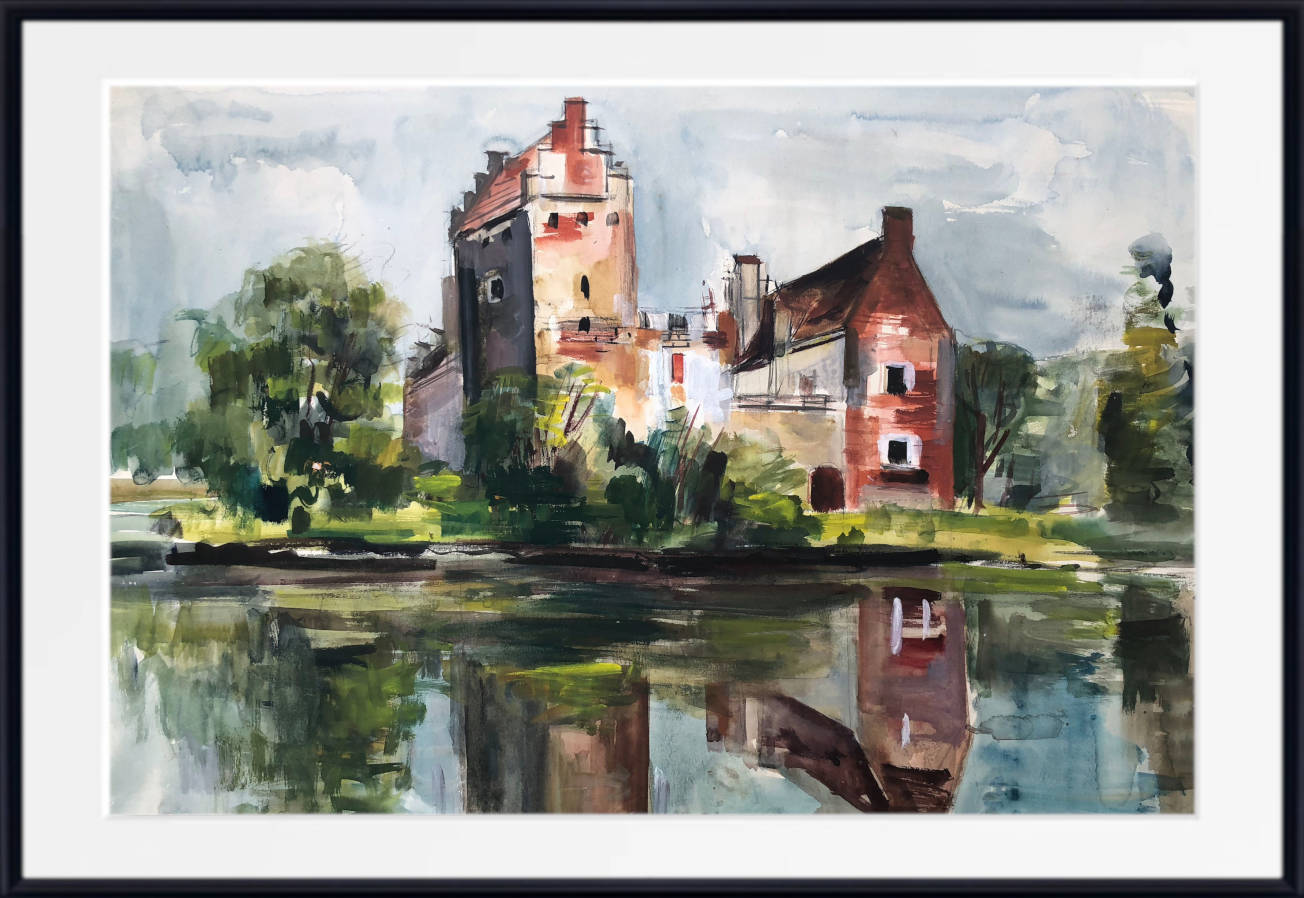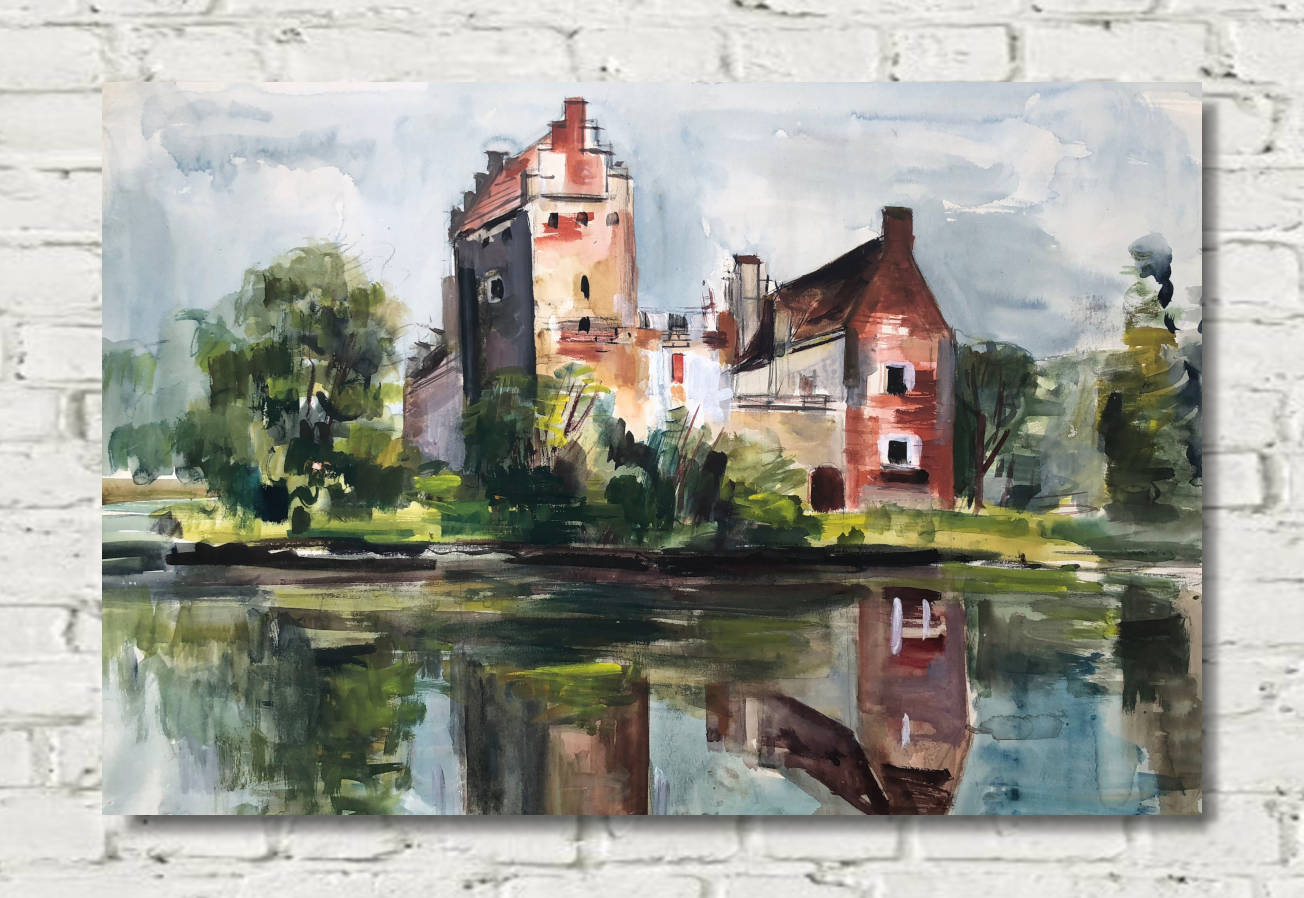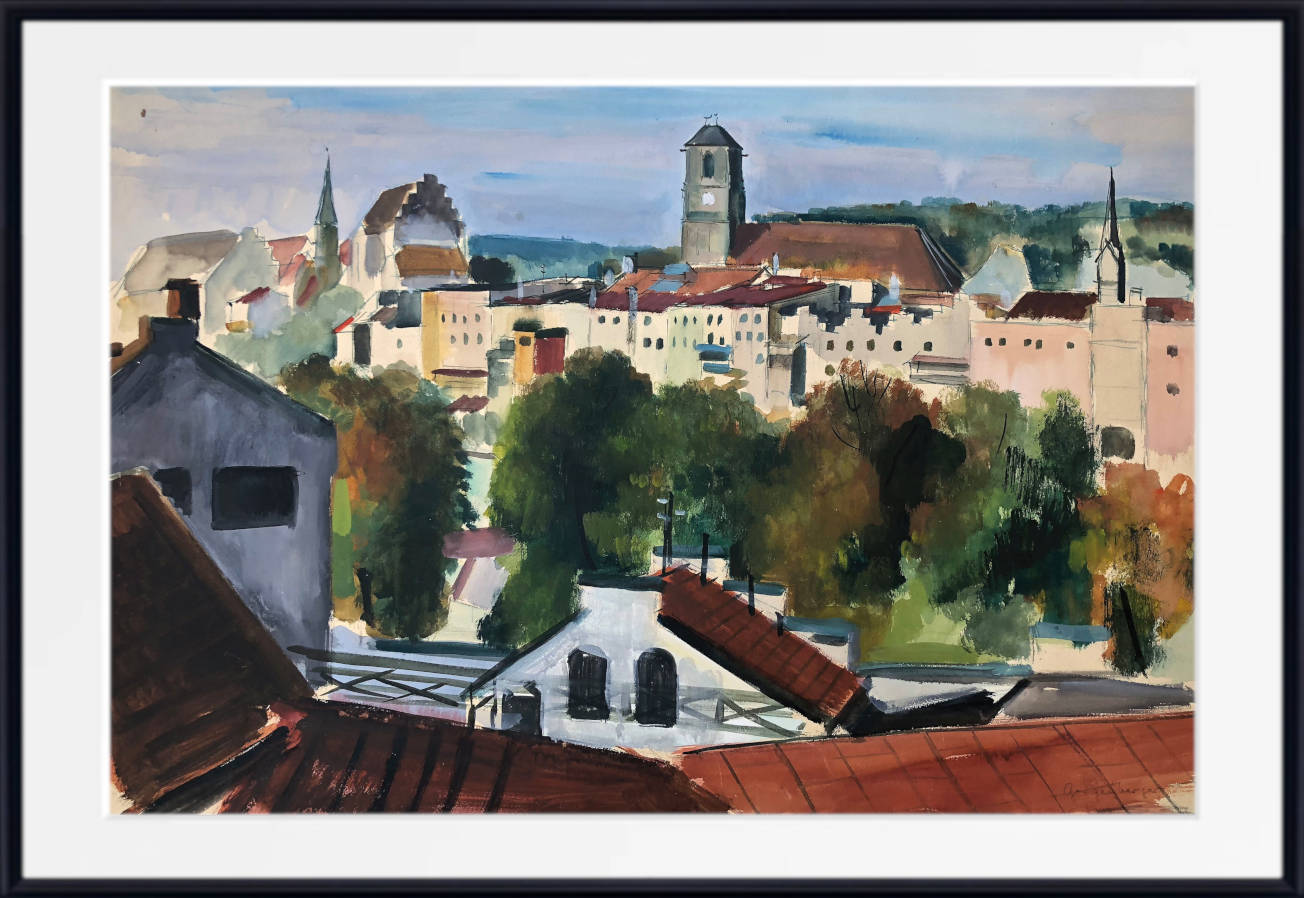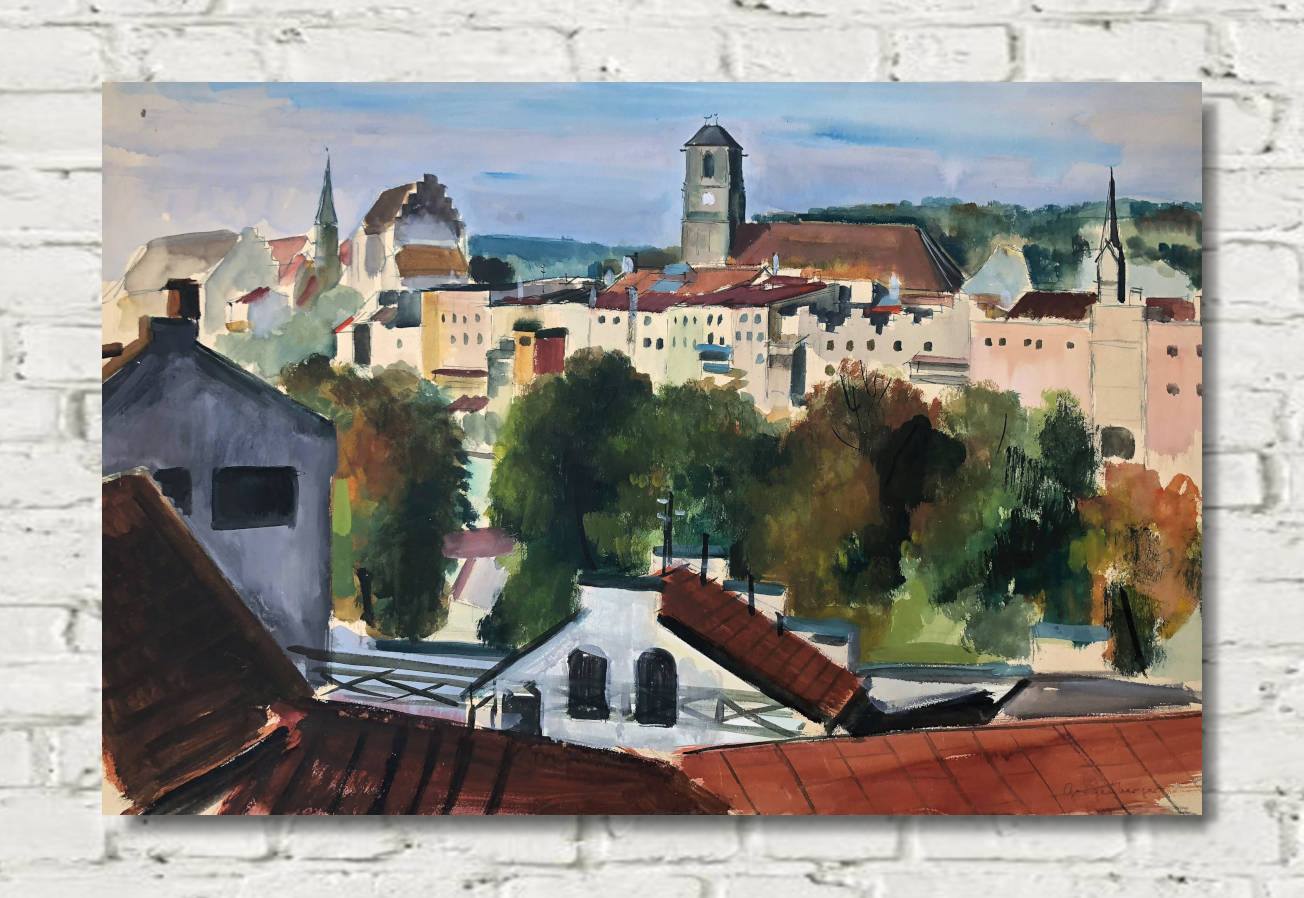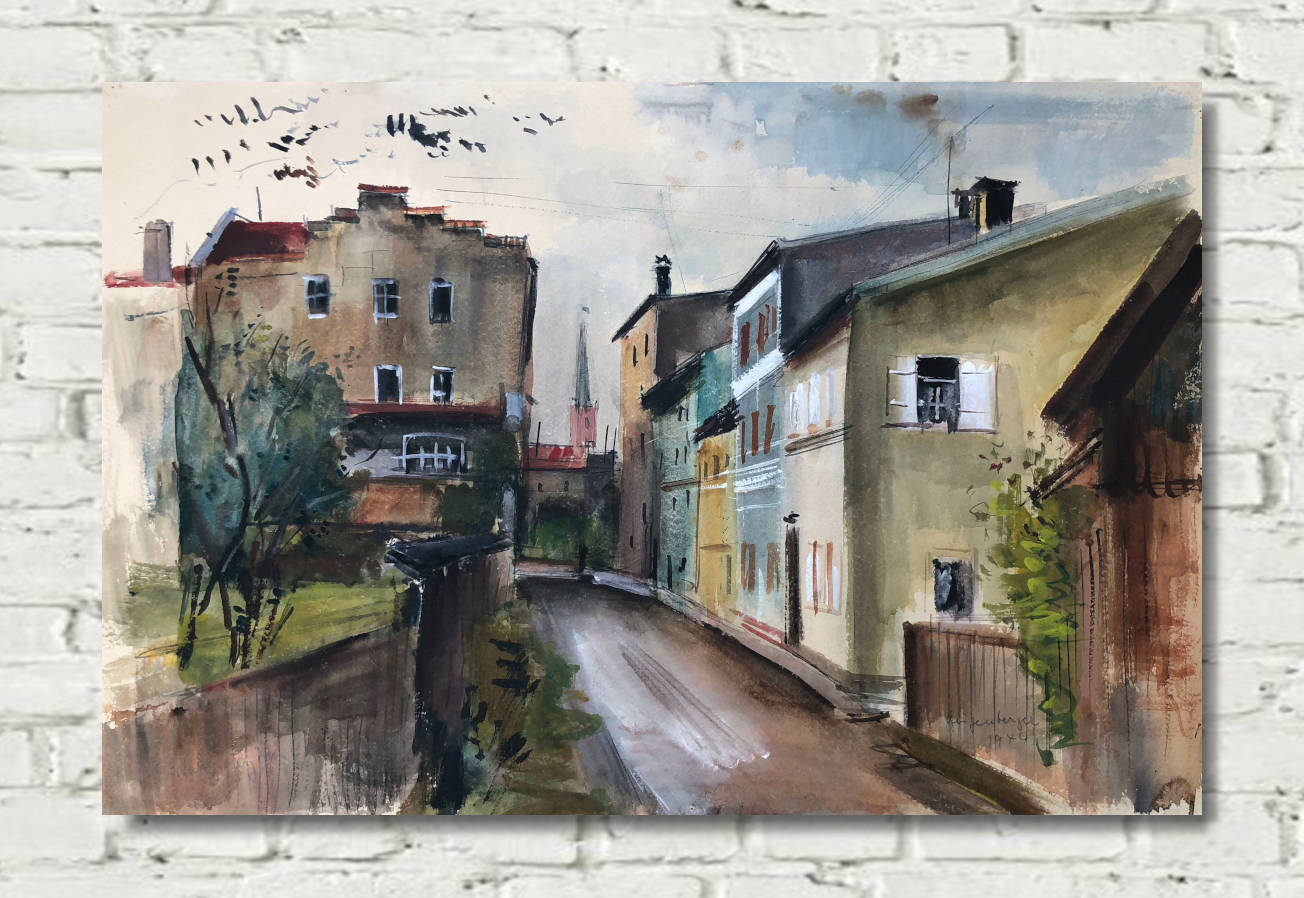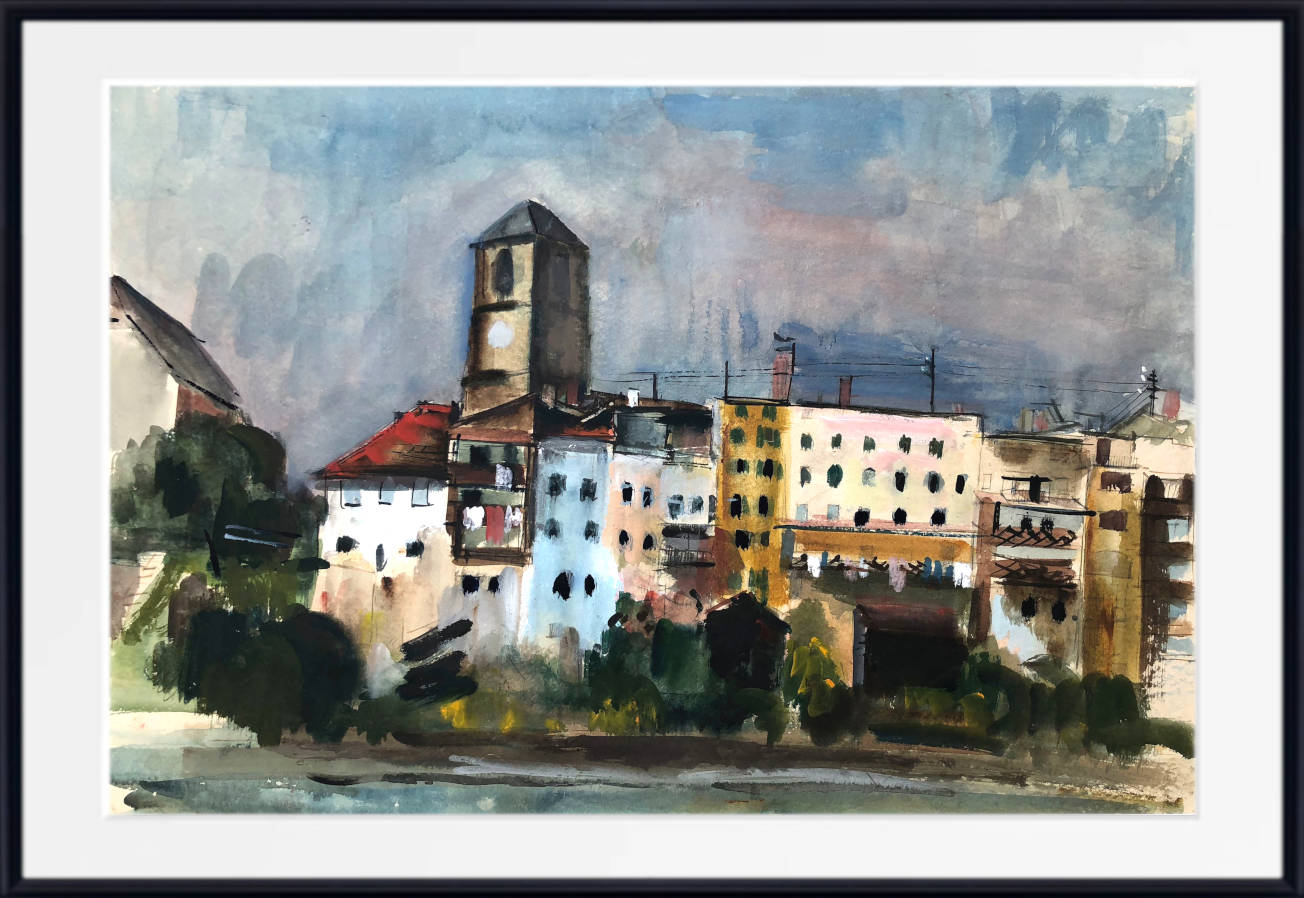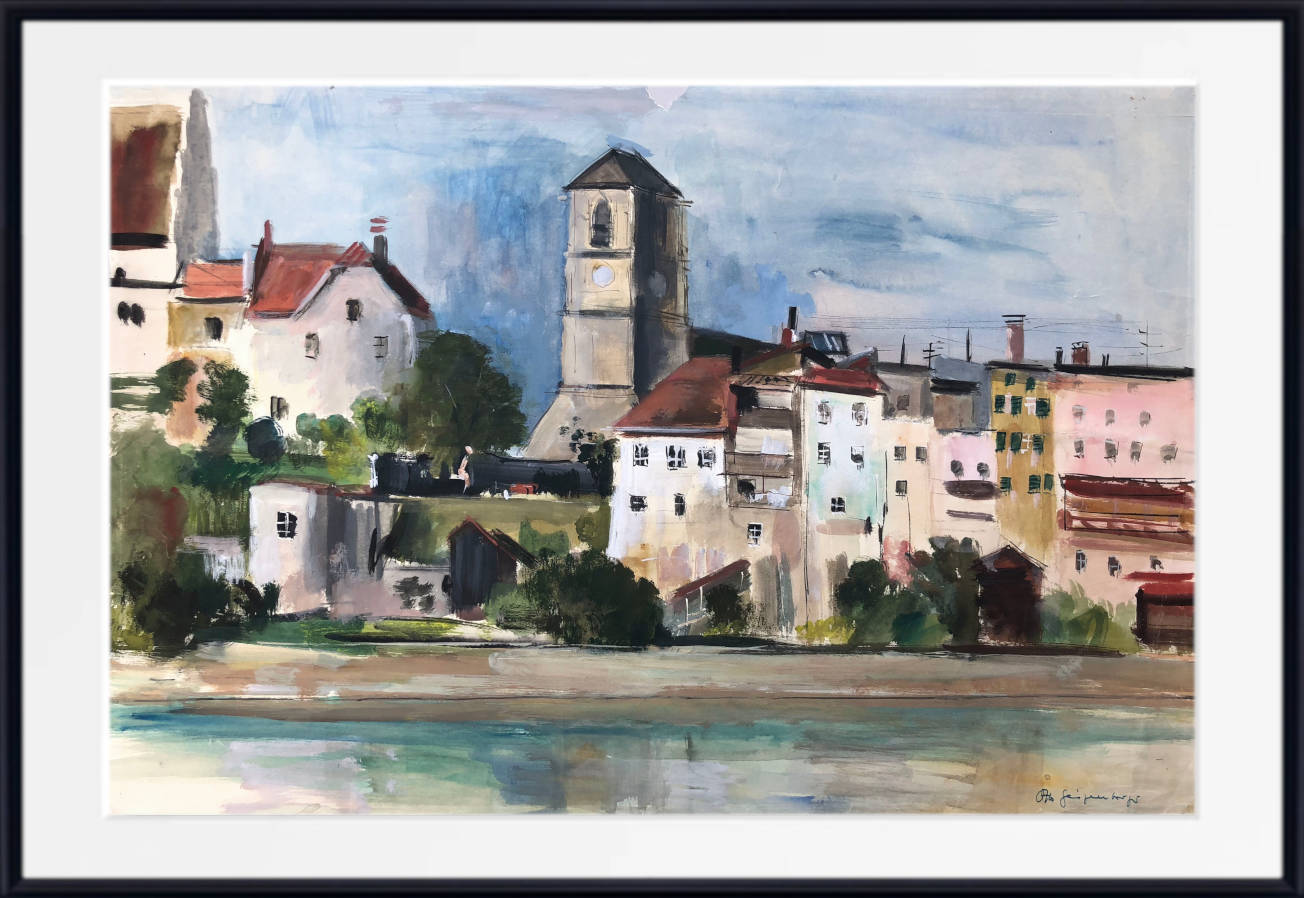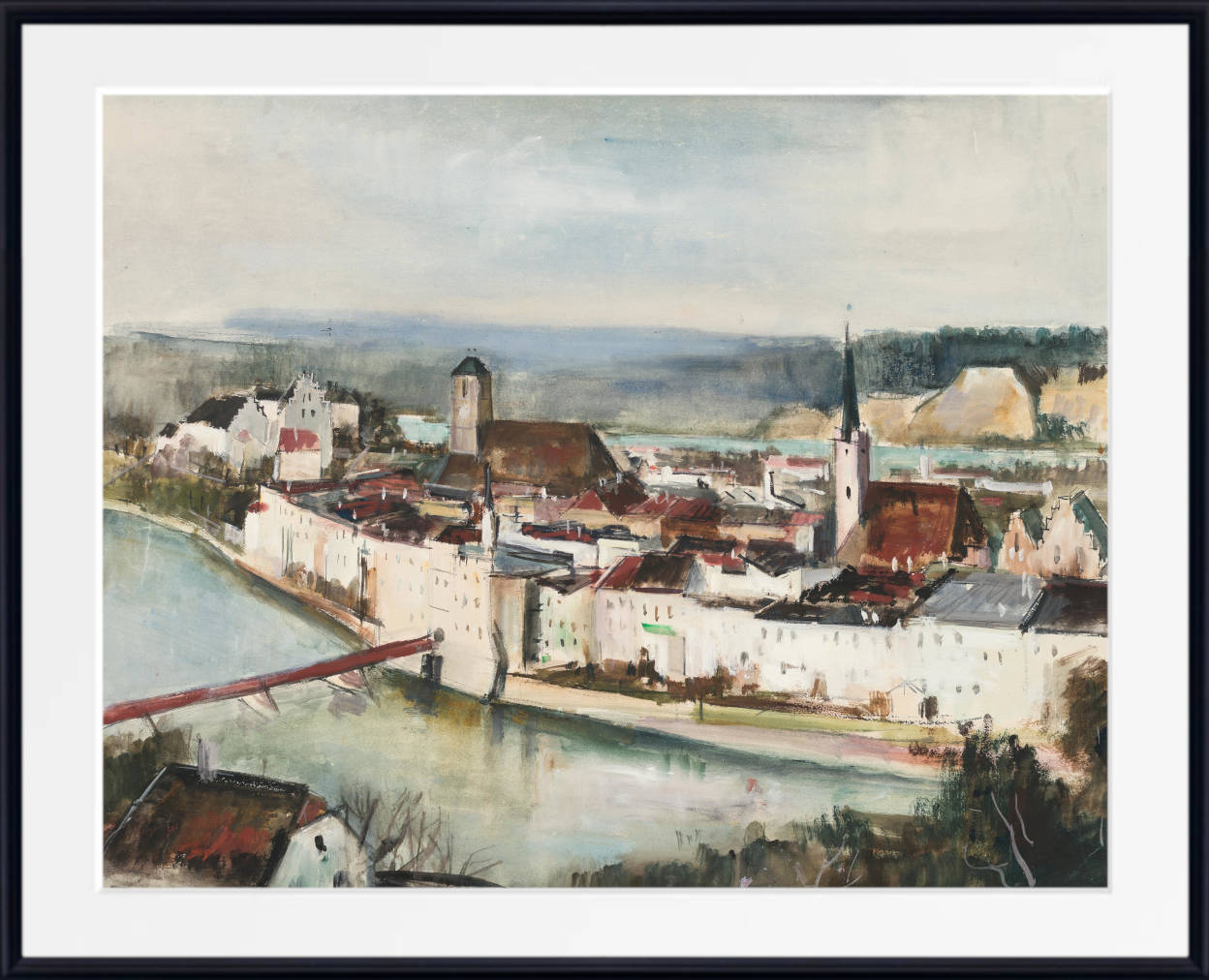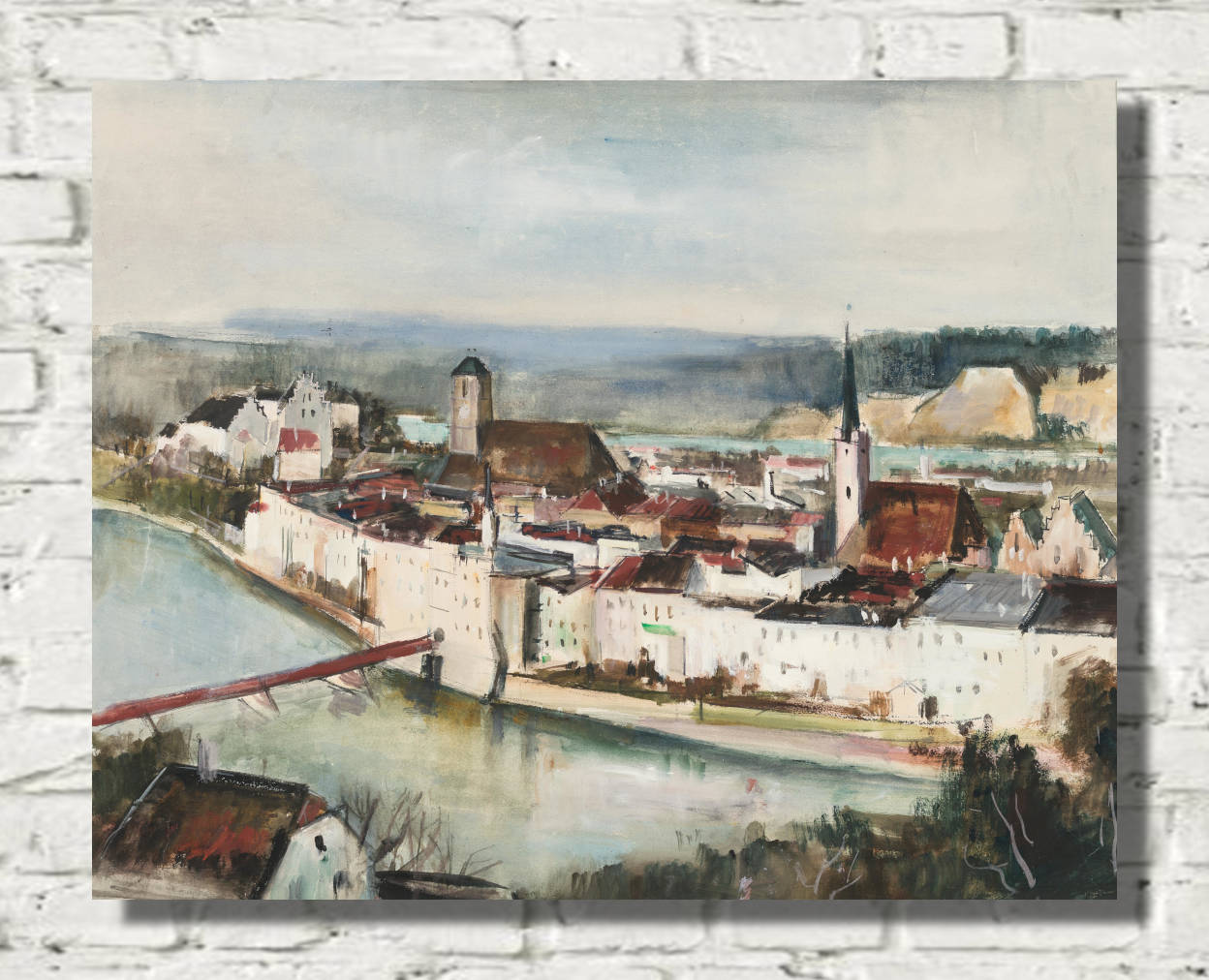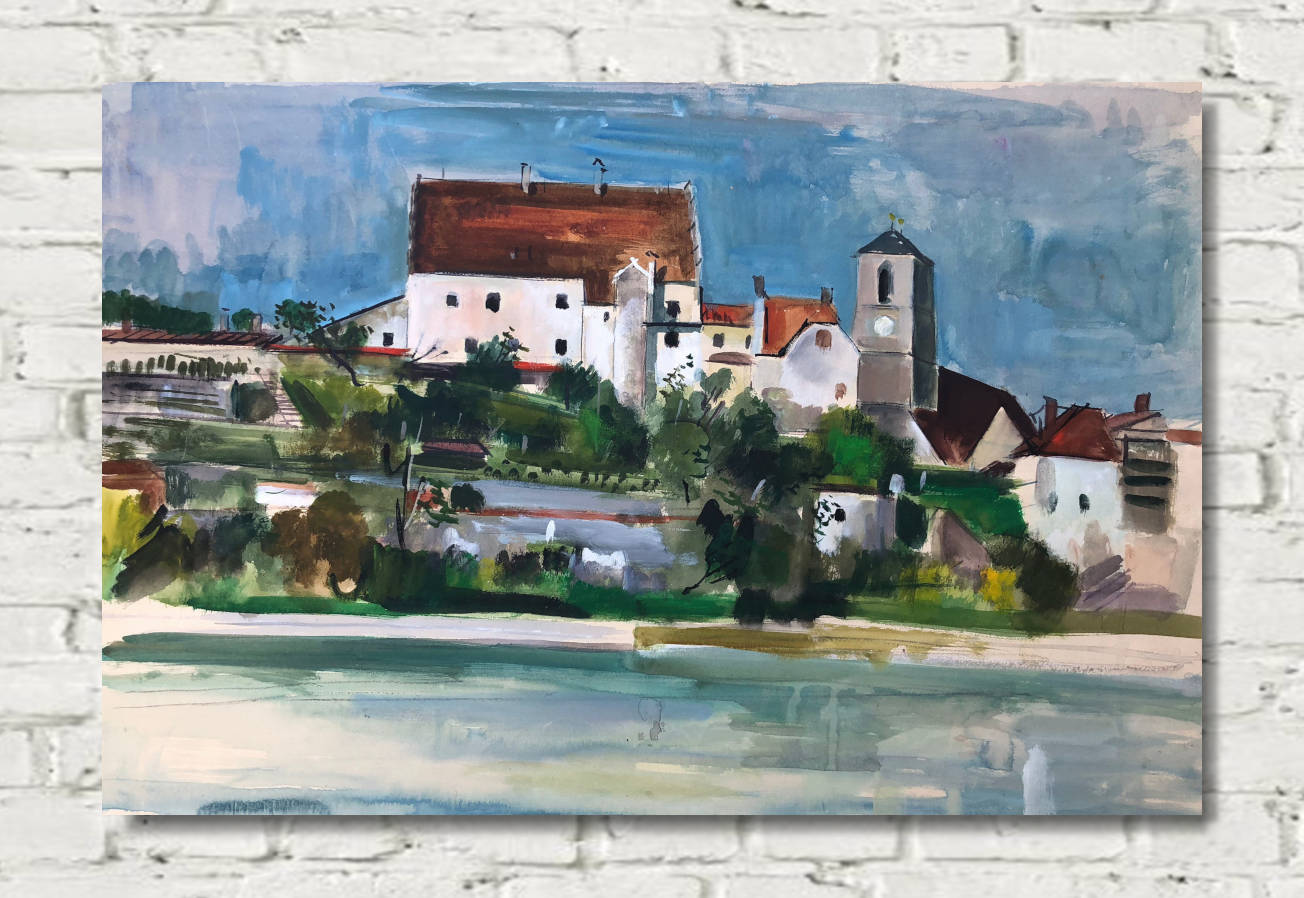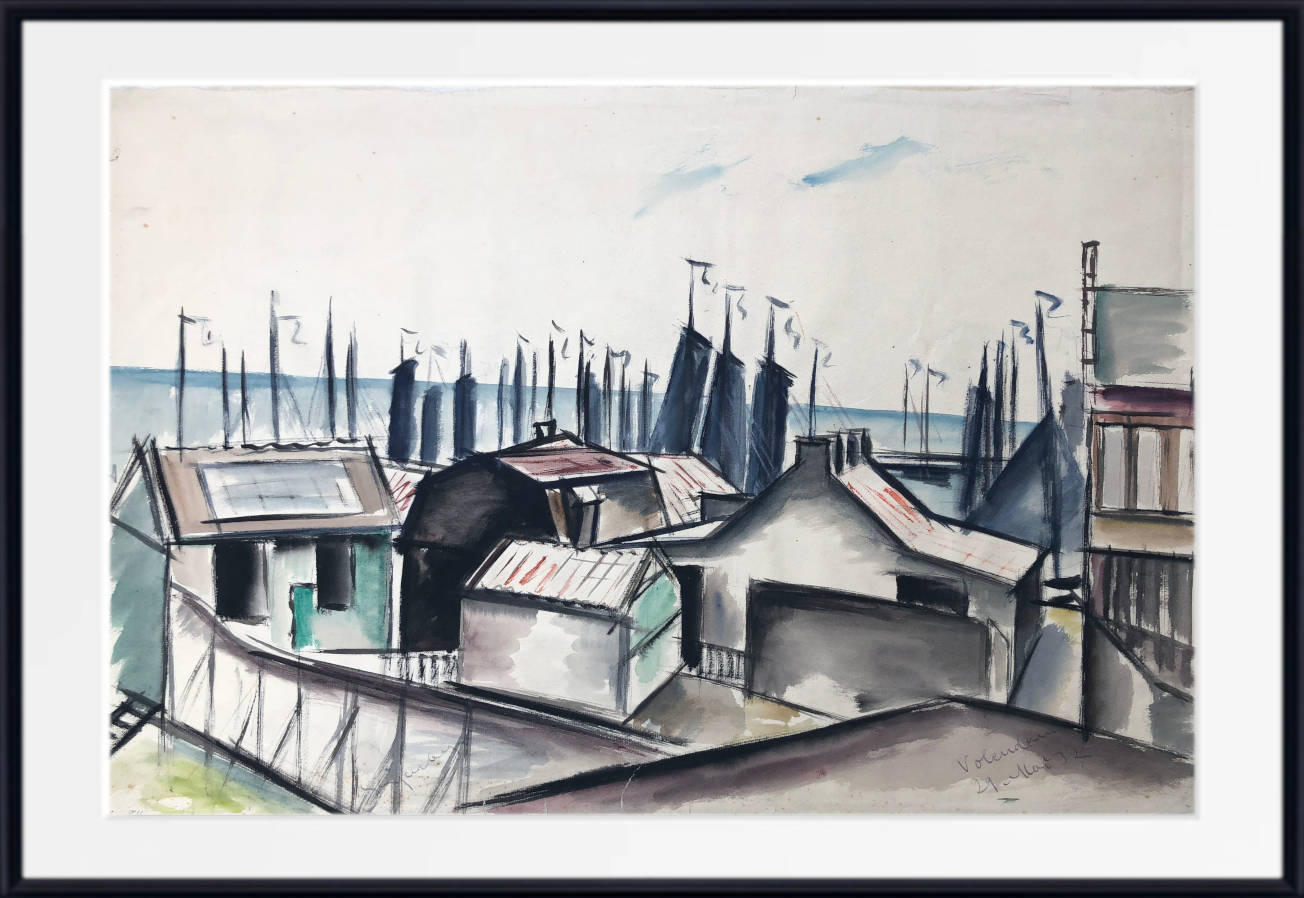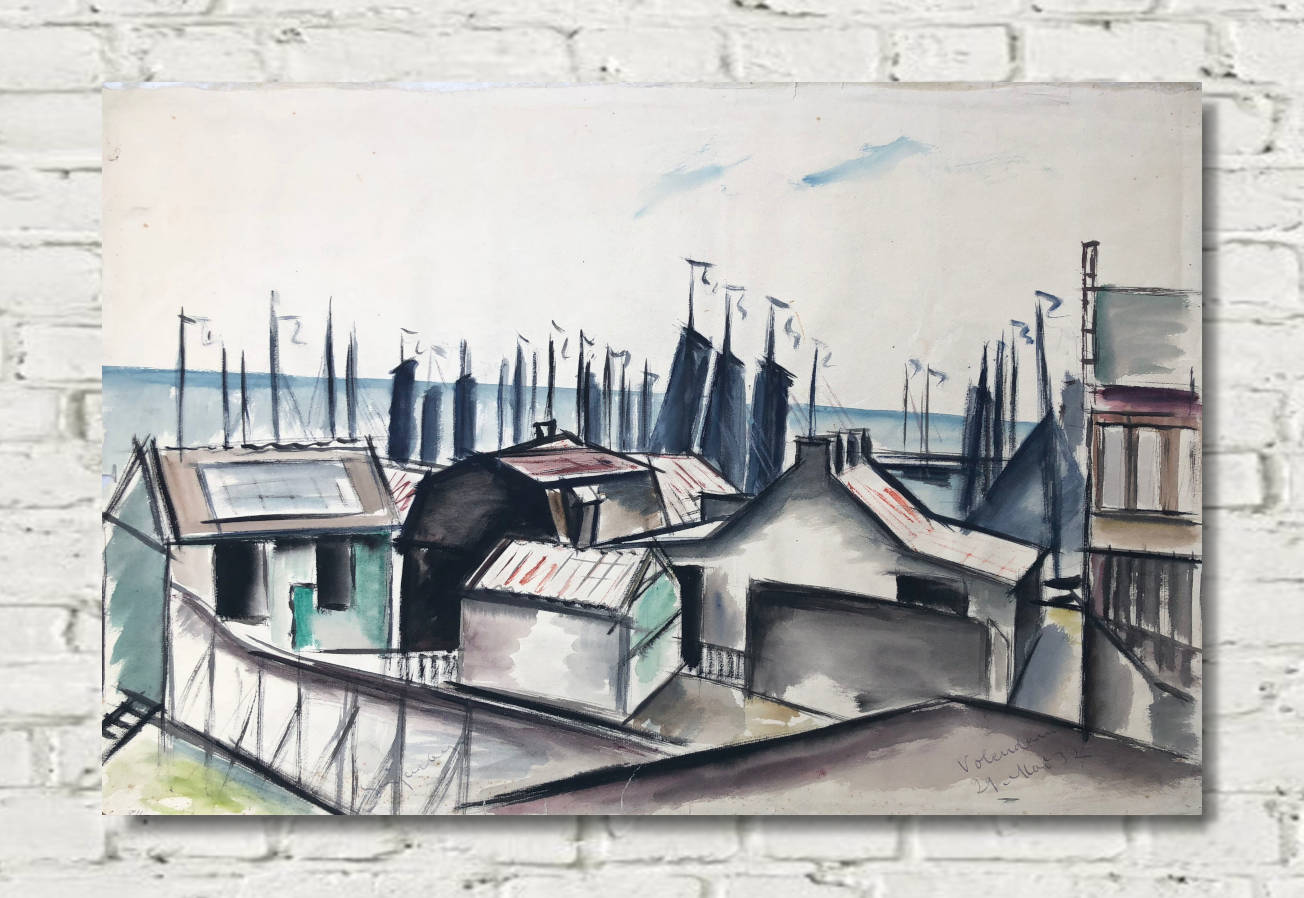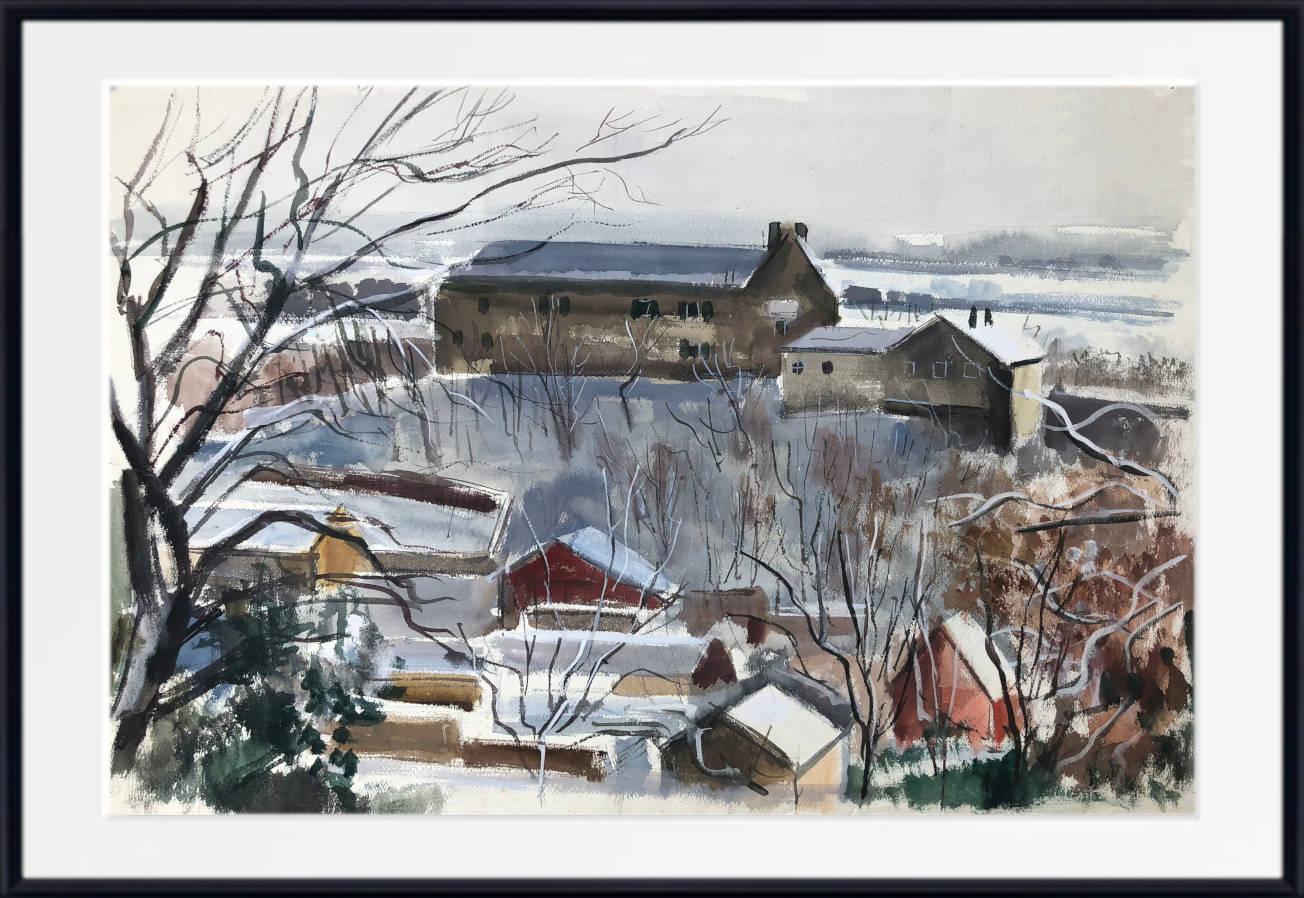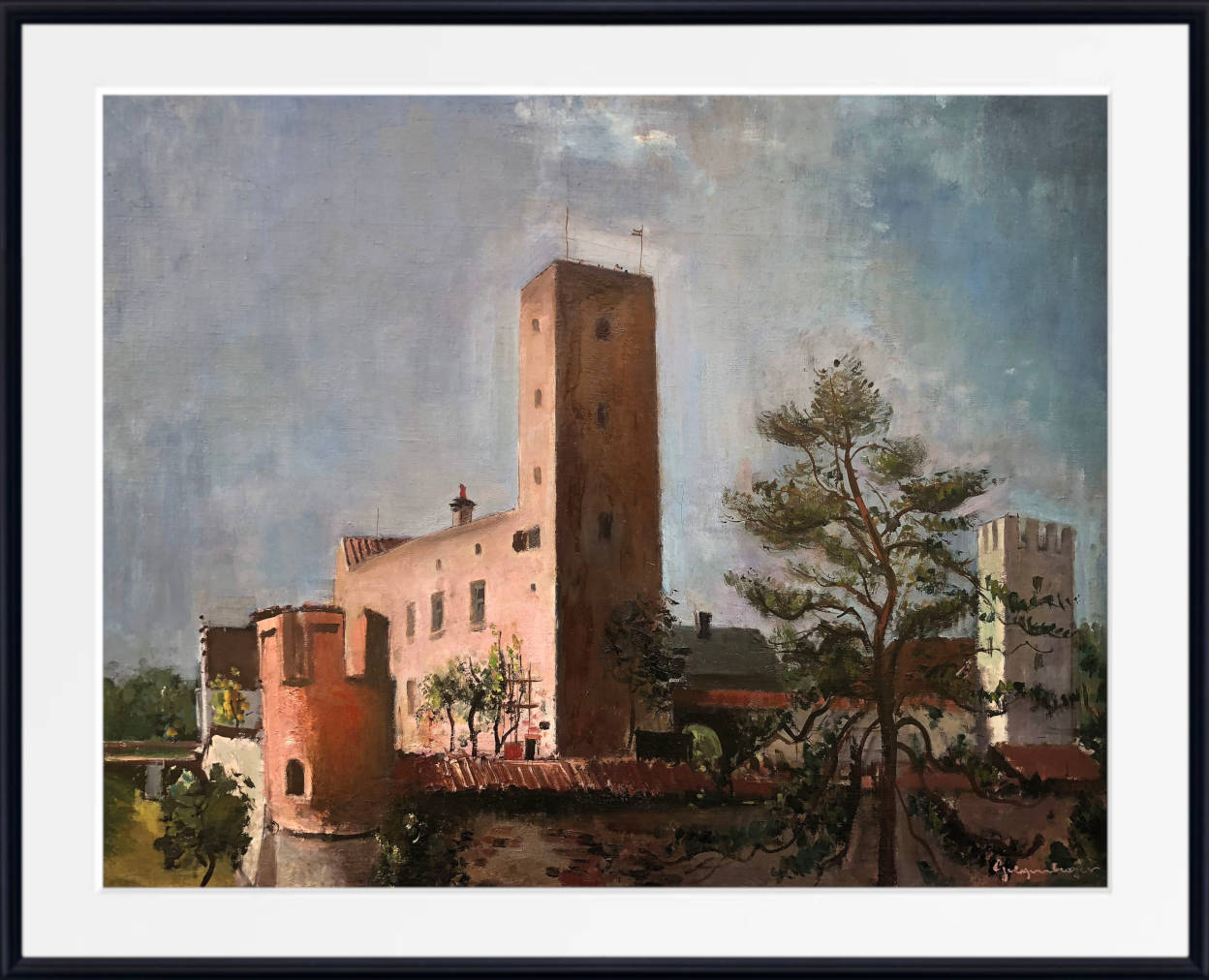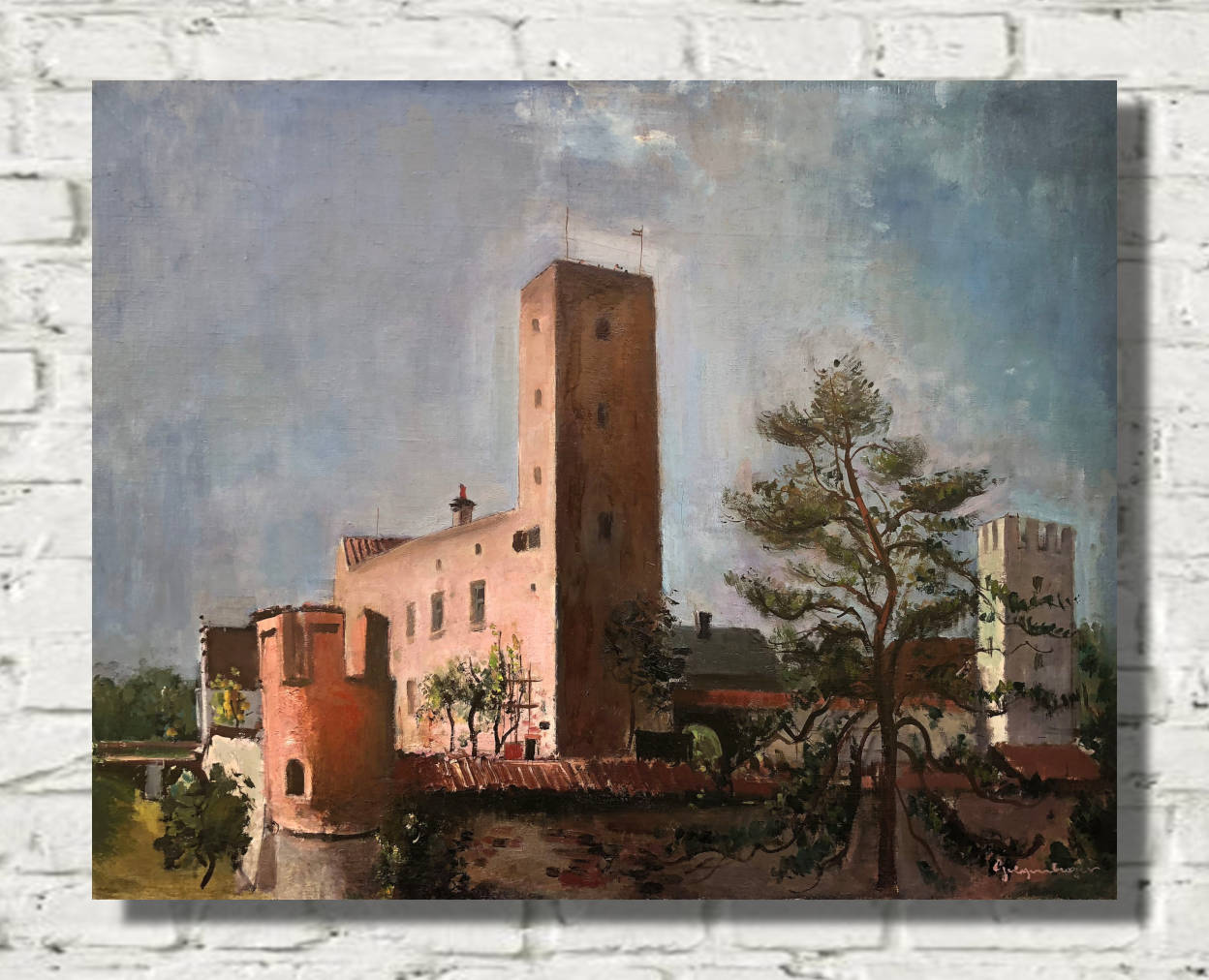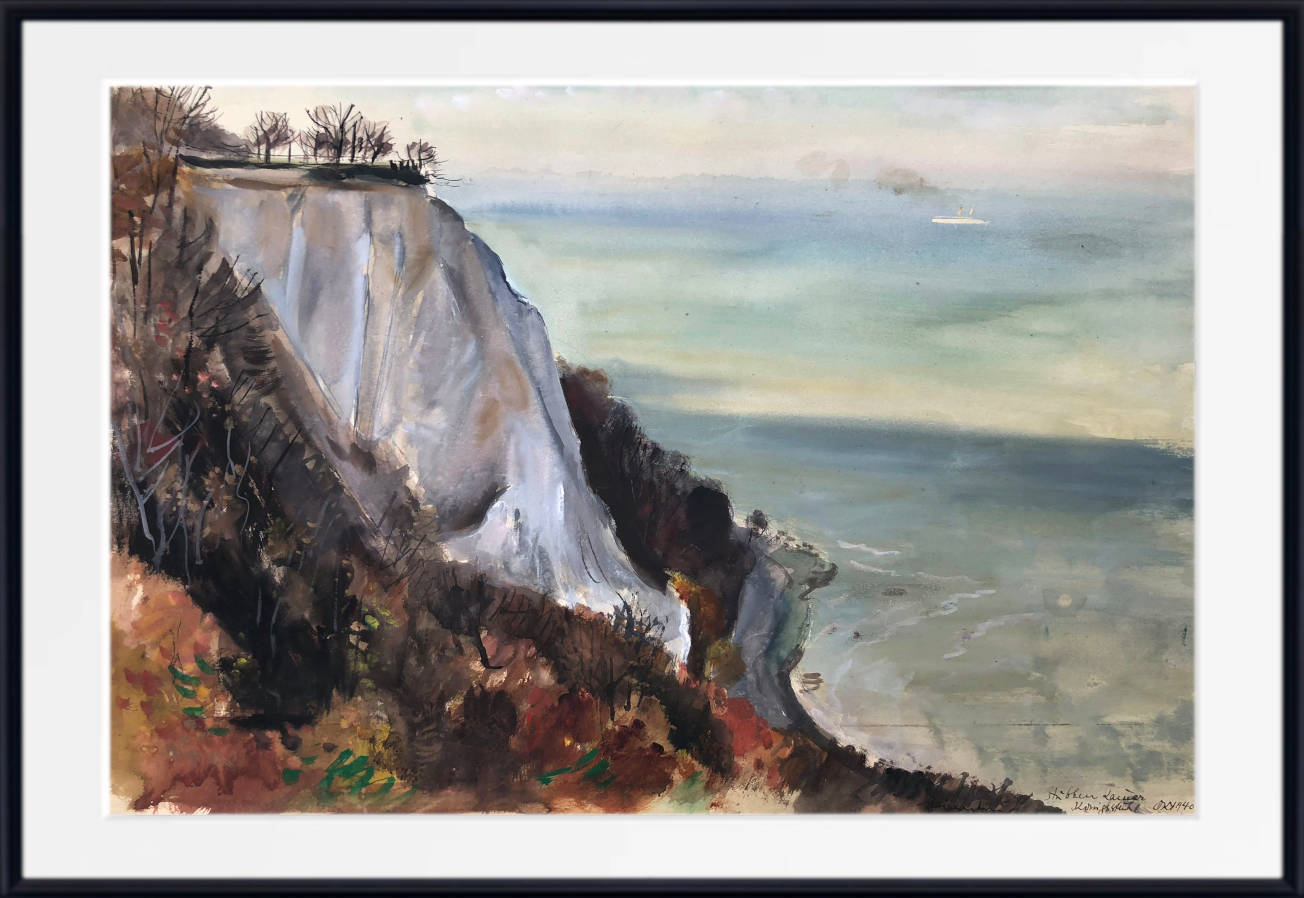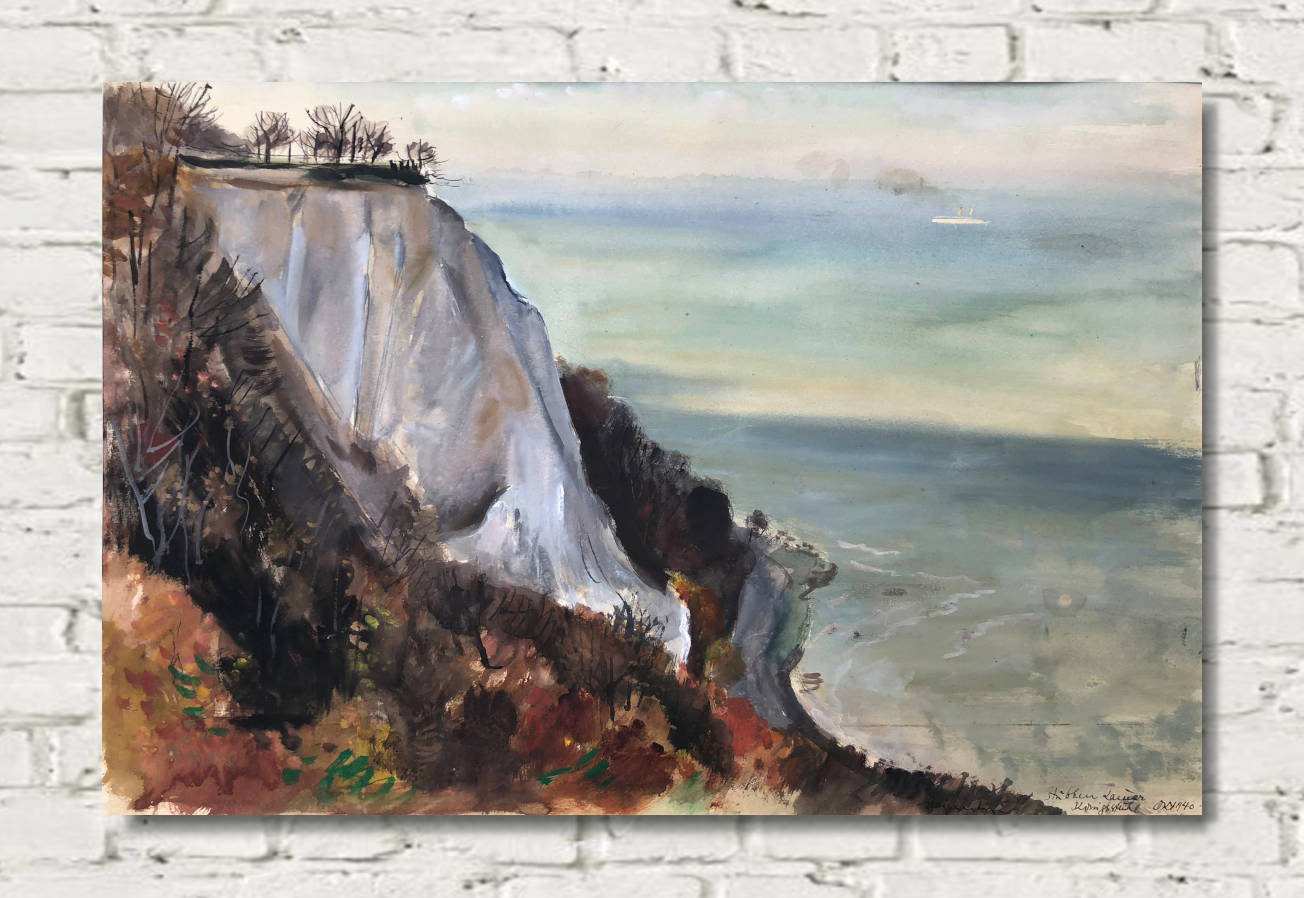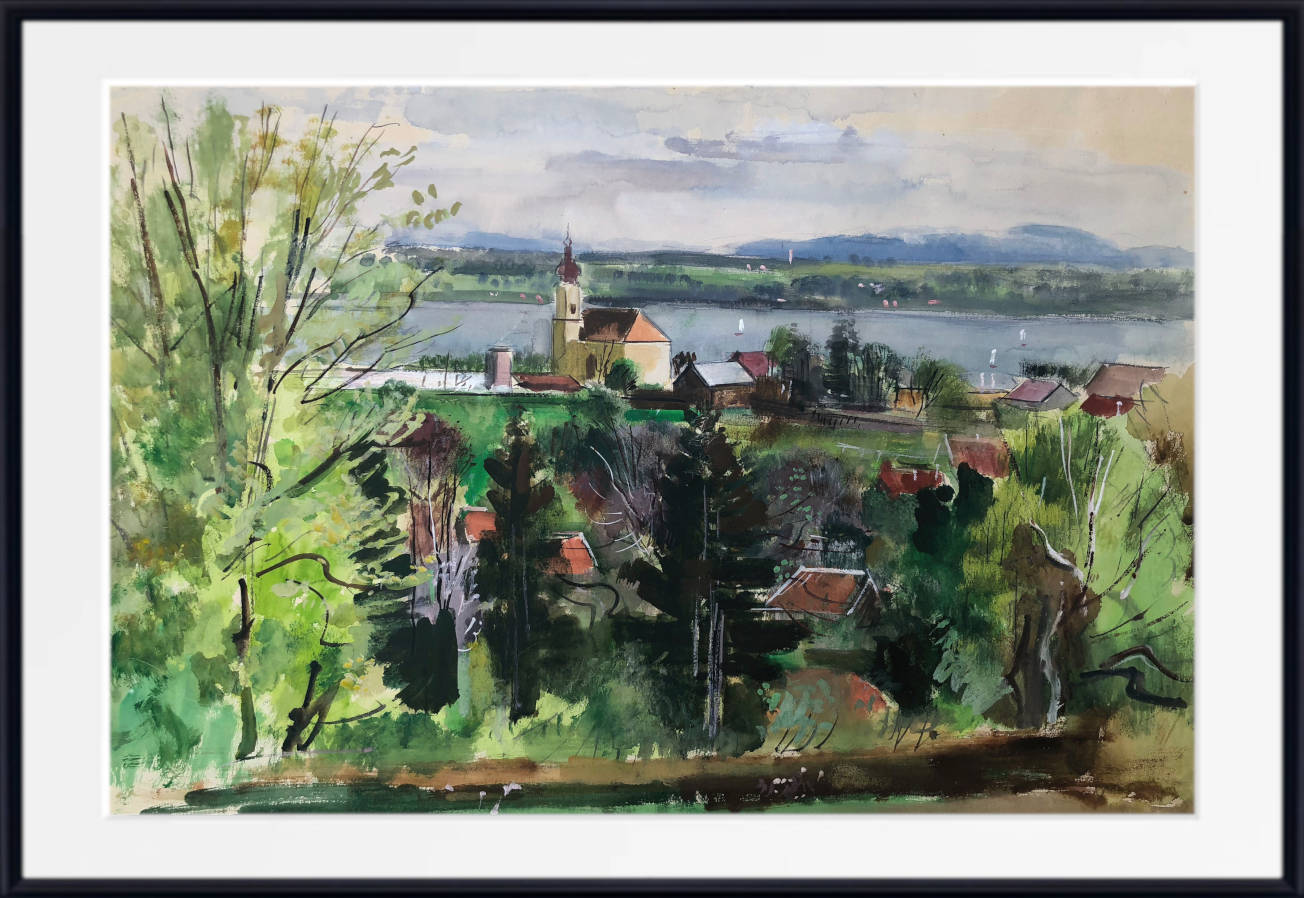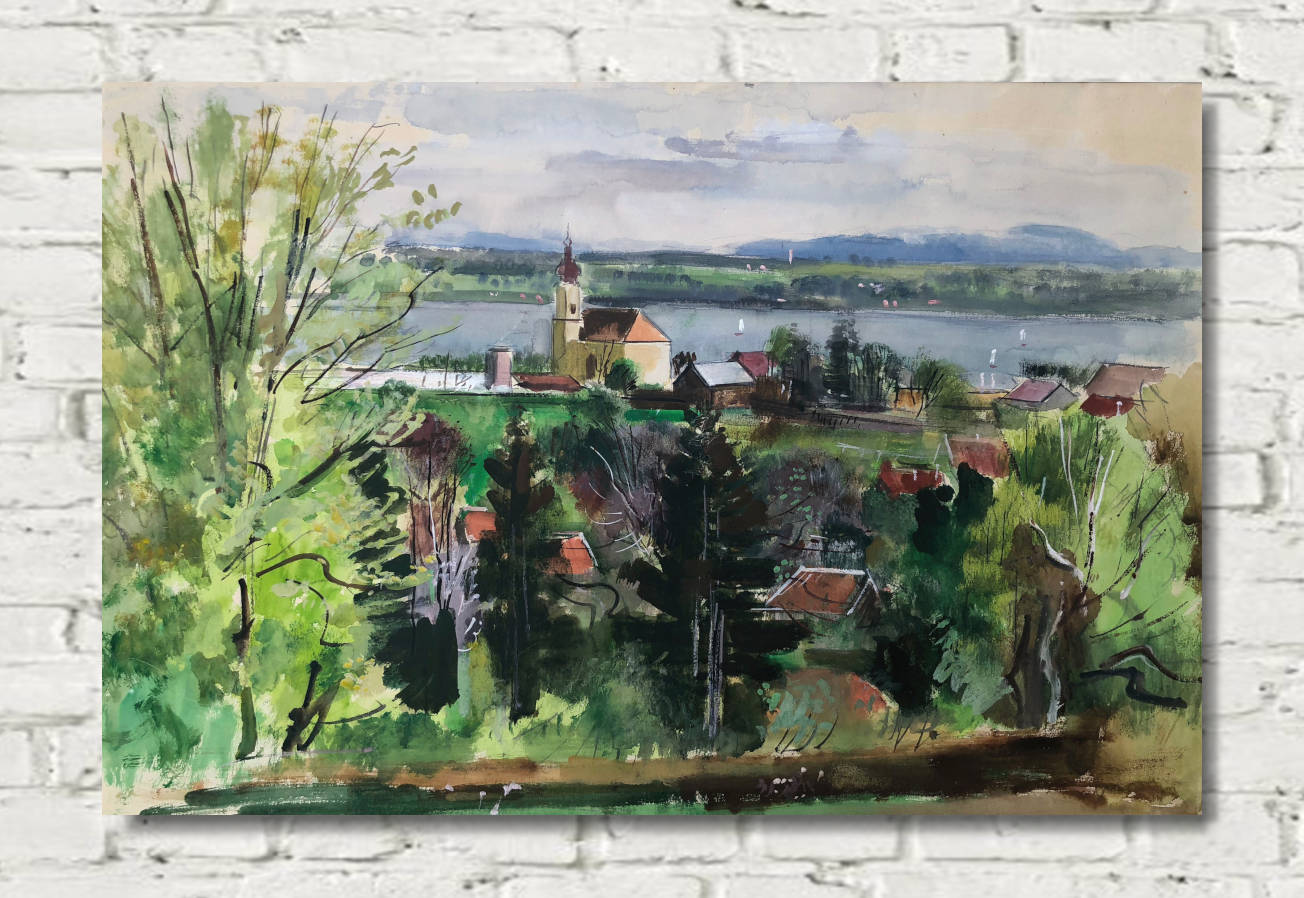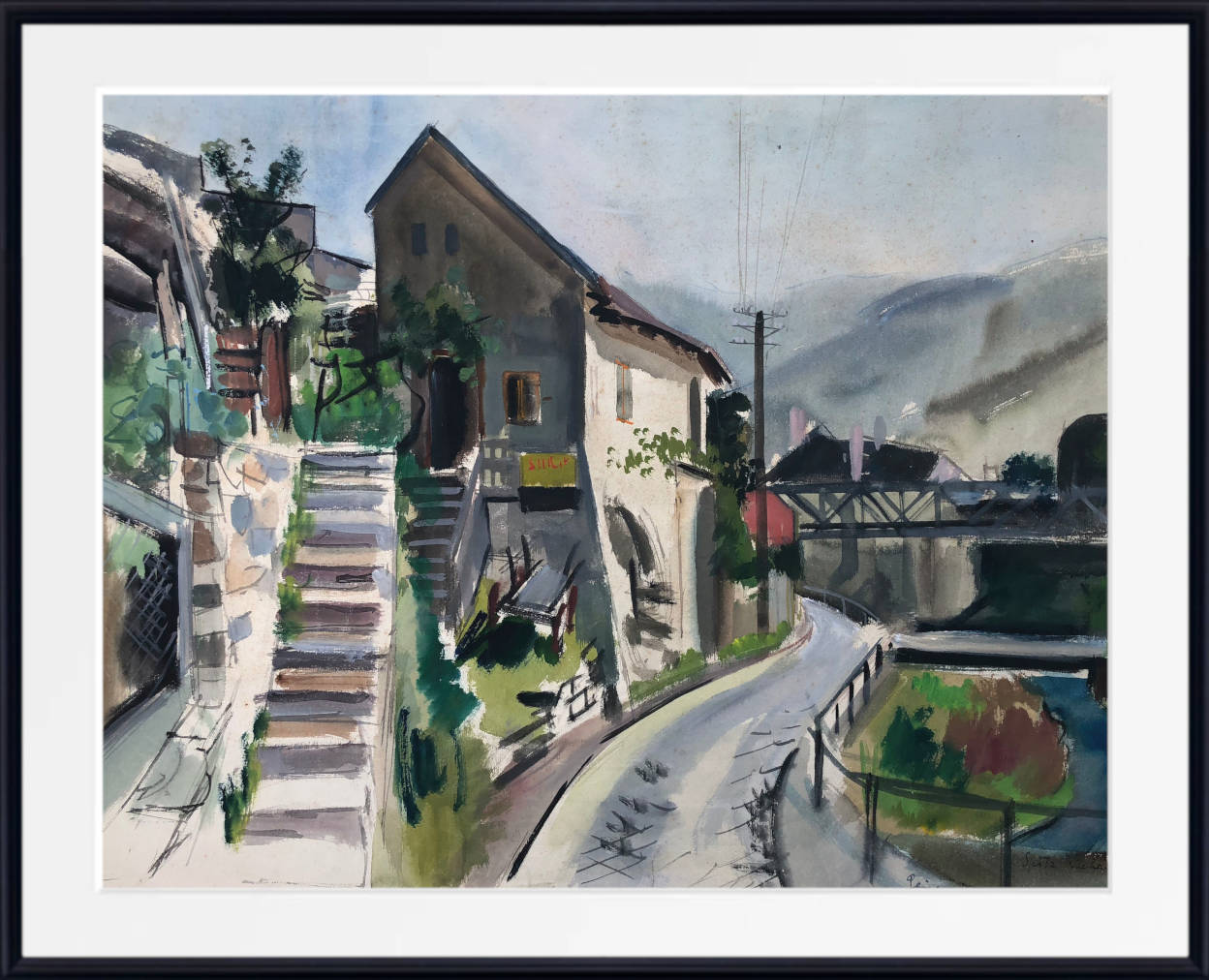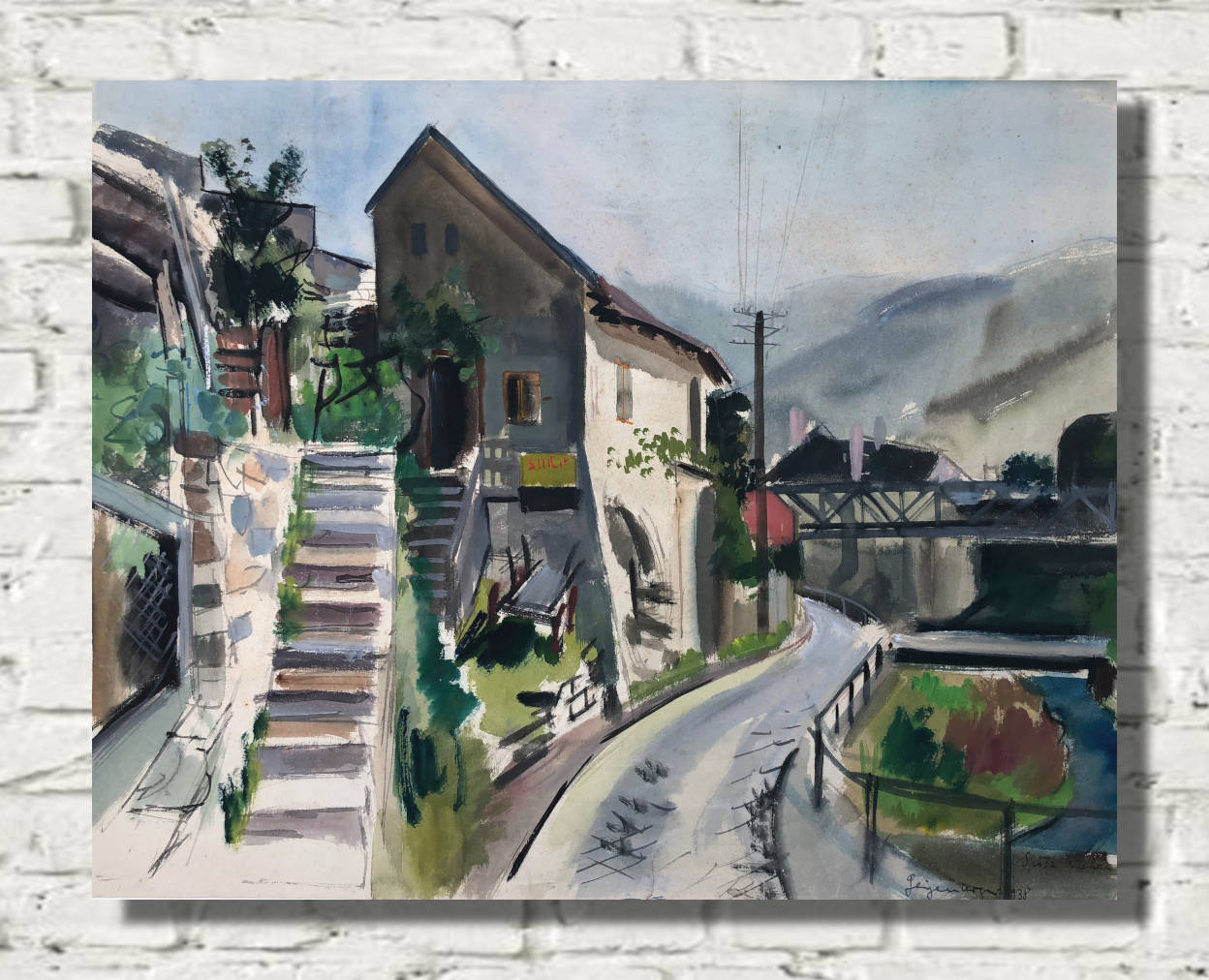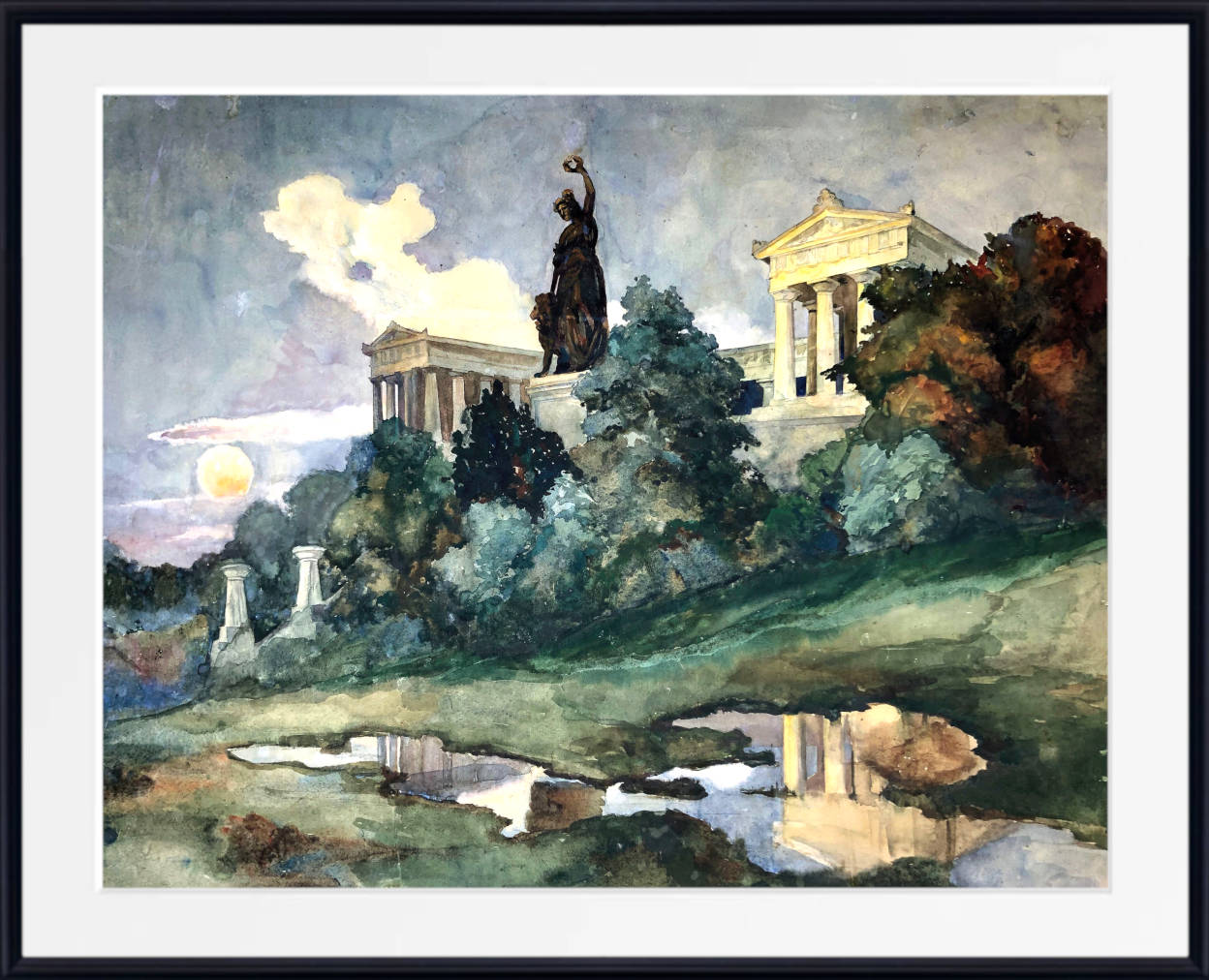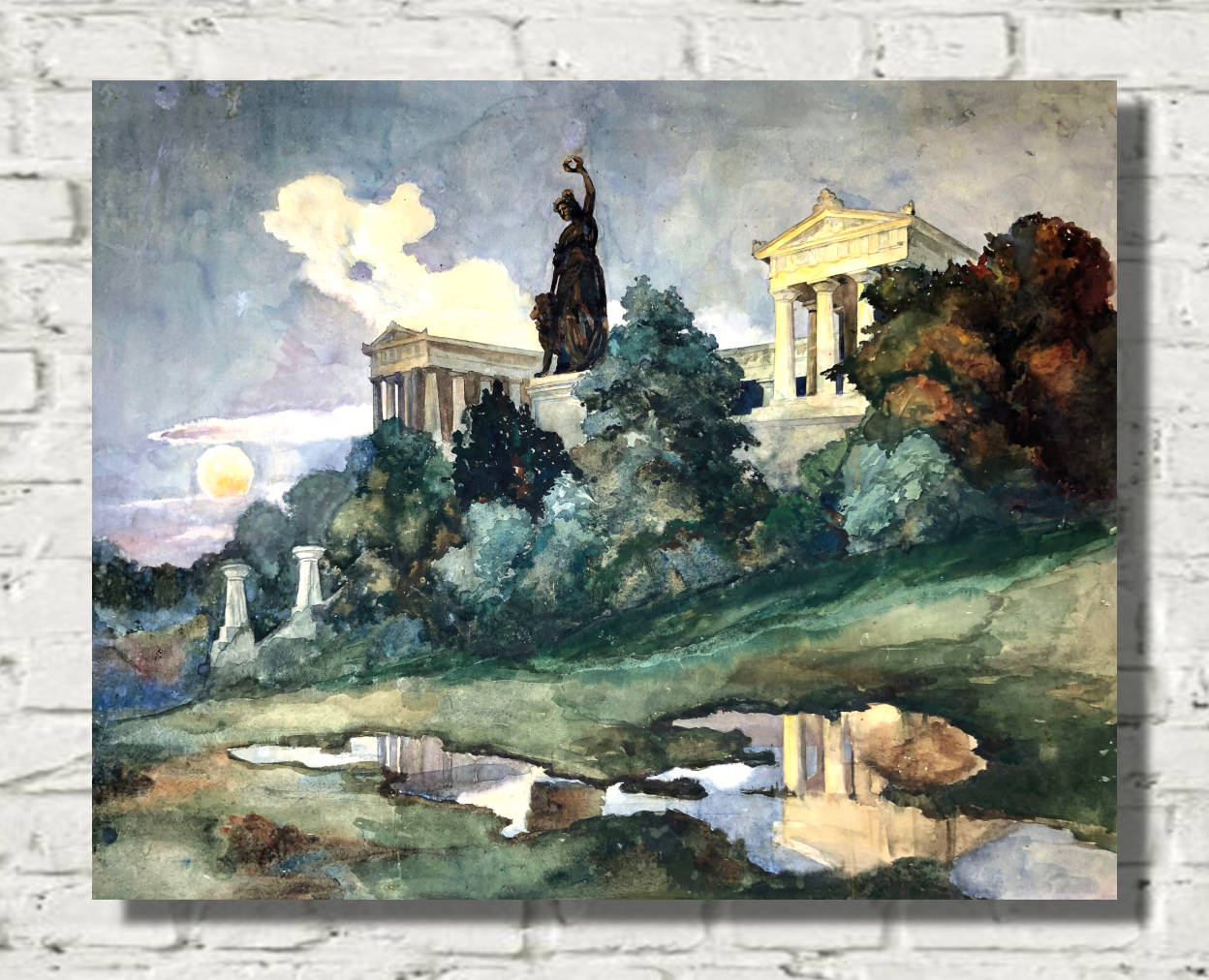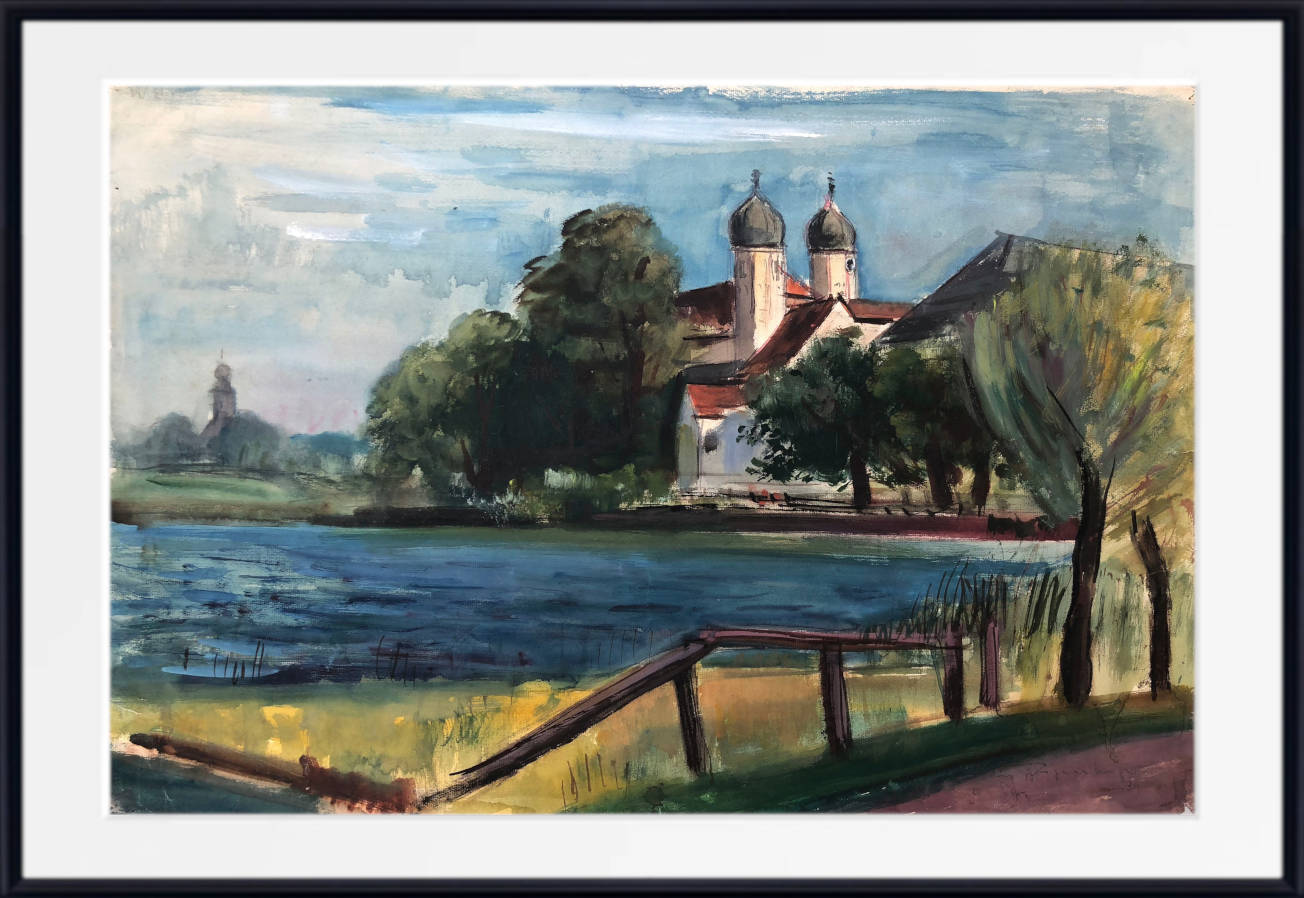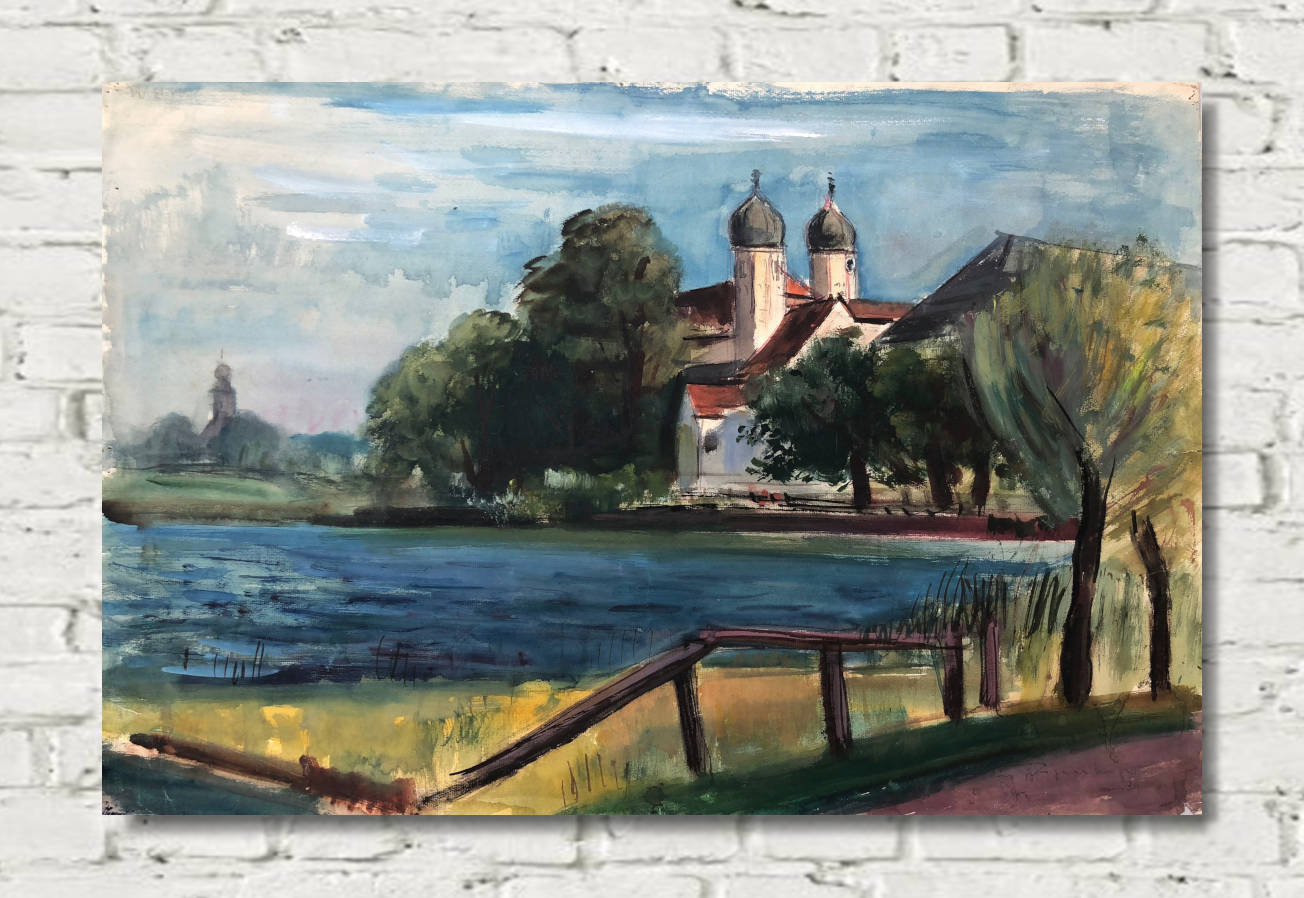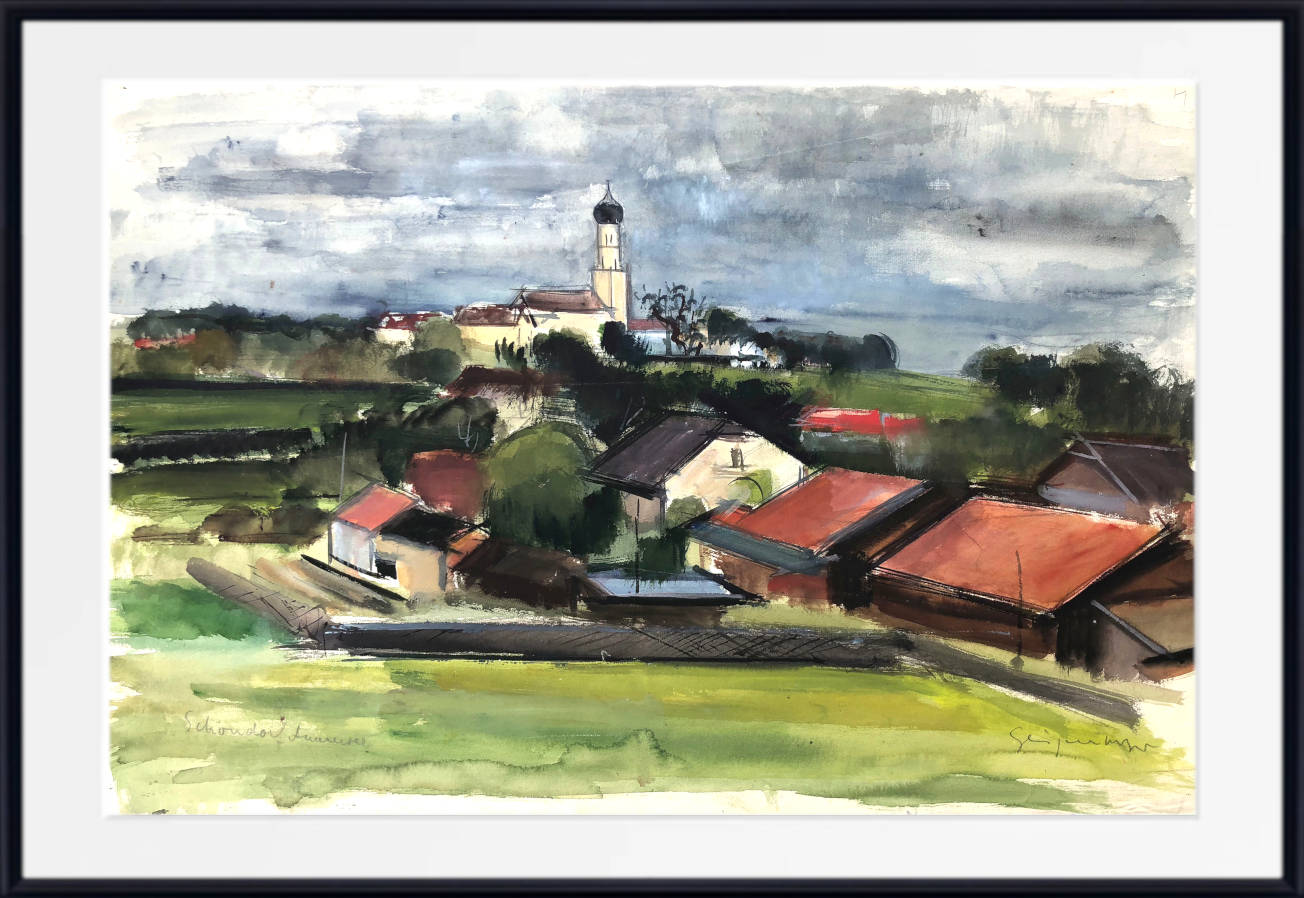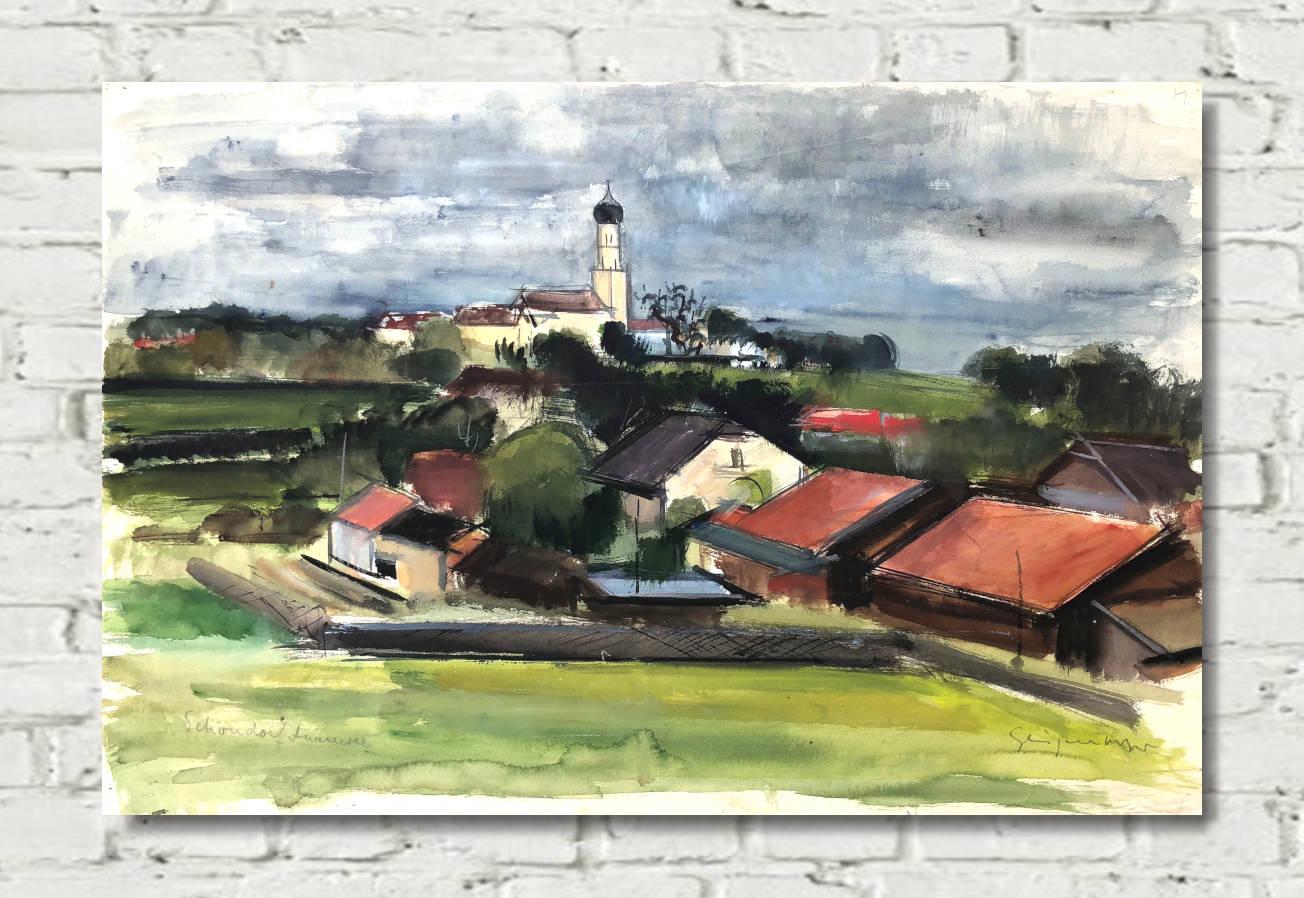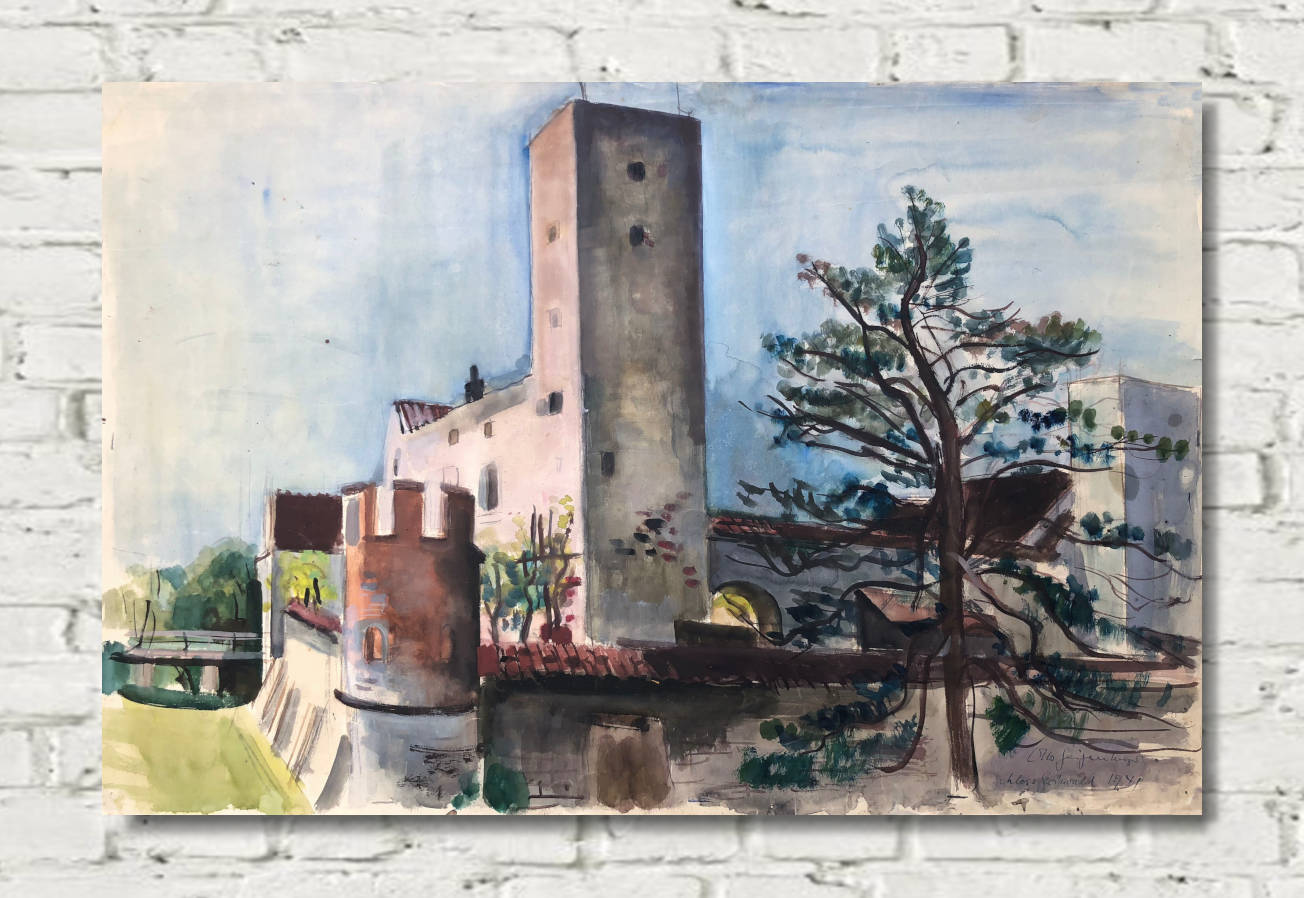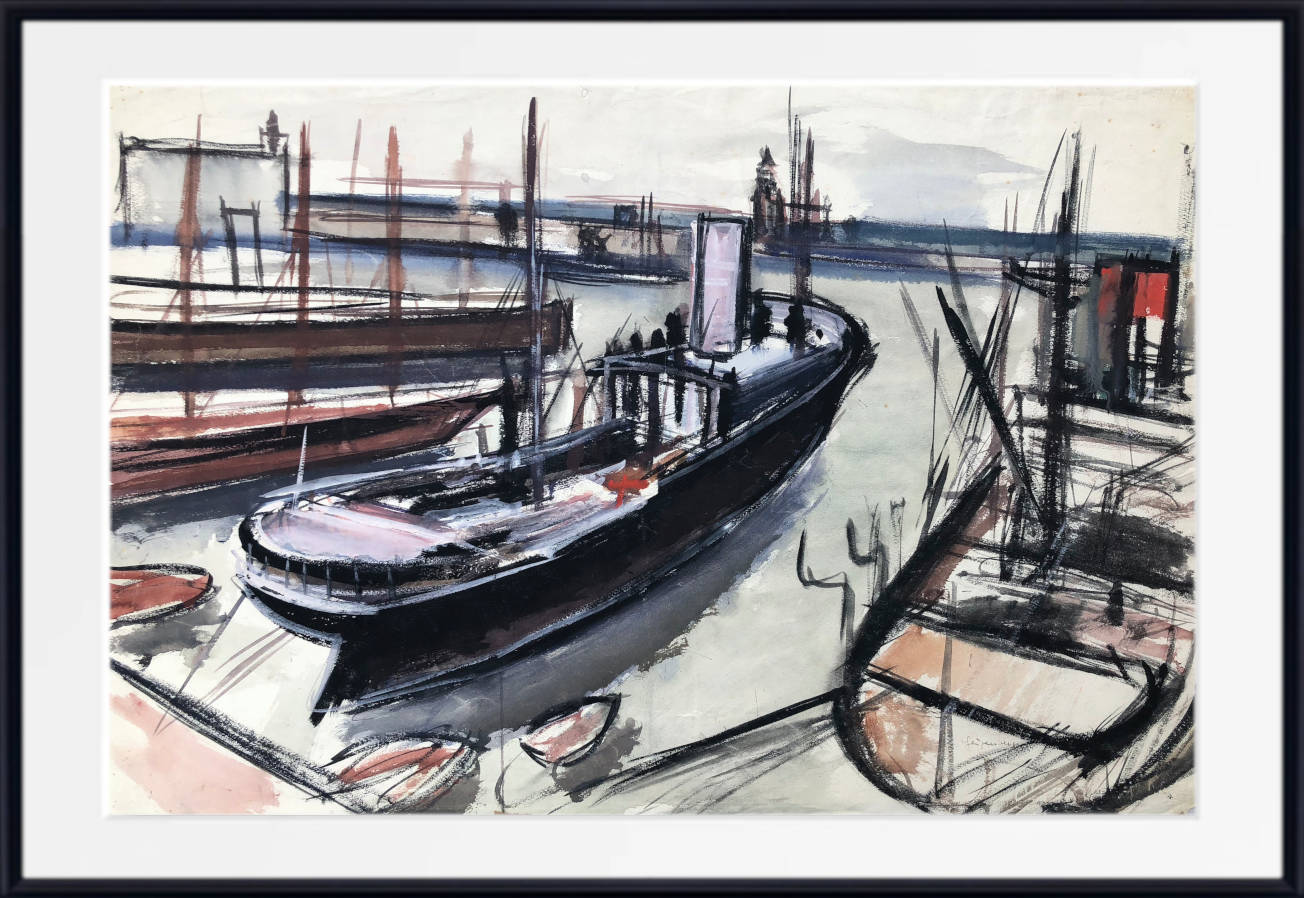Otto Geigenberger (1881-1946) stands as one of Germany's most distinctive yet underappreciated modernist painters, known for his powerful industrial landscapes and unique interpretation of expressionism. His work bridges the gap between traditional landscape painting and modernist abstraction, offering a compelling perspective on Germany's rapid industrialization in the early 20th century.
Biography
Born in Munich on June 27, 1881, Otto Geigenberger grew up during a period of unprecedented industrial growth in Germany. He studied at the Munich Academy of Fine Arts from 1900 to 1905, where he developed his foundational artistic skills under the tutelage of Johann Caspar Herterich and Wilhelm von Diez.
Geigenberger's early career coincided with the rise of German Expressionism, though he maintained a distinctive style that set him apart from his contemporaries. His work was interrupted by World War I, during which he served in the German army. This experience profoundly influenced his later artistic development, particularly in his treatment of industrial subjects.
Following the war, Geigenberger established himself in Munich, where he became associated with the Neue Sachlichkeit (New Objectivity) movement, though he never fully embraced its strict realism. Instead, he developed a unique synthesis of expressionist emotion and architectural precision.
Artistic Style and Technique
Geigenberger's distinctive style combines expressionist brushwork with a geometric approach to composition. His technique is characterized by:
- Bold, gestural brushstrokes that create dynamic surfaces
- A limited but powerful color palette, often focusing on earth tones punctuated by vivid accents
- Strong emphasis on architectural forms and industrial structures
- Masterful use of perspective to create depth and drama
- Integration of natural and industrial elements in complex compositions
His painting technique typically involved:
- Initial sketches in charcoal or pencil
- Underpainting in earth tones
- Building up layers of oil paint with varying opacity
- Final glazes to unify the composition
Analysis of Key Works
Esch an der Sauer, Gesamtansicht (Luxemburg) (circa 1943)
This panoramic view of Esch-sur-Sûre, Luxembourg, represents one of Geigenberger's most accomplished late works. The painting demonstrates his mature style in its treatment of architectural forms within a natural setting. The composition is dominated by the town's medieval architecture nestled in the dramatic valley of the Sûre River.
Key elements:
- Masterful handling of aerial perspective
- Integration of built environment with natural landscape
- Subtle color harmonies emphasizing the relationship between stone architecture and natural rock formations
- Dynamic compositional structure that leads the eye through multiple levels of depth
Industriewerk in Linz
This powerful industrial scene showcases Geigenberger's fascination with modern industrial architecture. The painting depicts the steel works in Linz, Austria, transformed through his expressionist lens into a monument to industrial might.
Notable features:
- Dramatic use of vertical elements (smokestacks and buildings)
- Strong geometric structuring of space
- Contrast between machine-made forms and atmospheric effects
- Complex interplay of light and shadow on industrial surfaces
Kamine (Industrie)
In this iconic work, Geigenberger reduces industrial architecture to its essential forms, creating a nearly abstract composition dominated by factory chimneys. The painting exemplifies his ability to find beauty in industrial structures while maintaining a critical perspective on industrialization.
Analysis reveals:
- Rhythmic arrangement of vertical forms
- Sophisticated handling of smoke effects
- Tension between geometric and organic forms
- Use of limited color palette to maximum effect
Legacy and Influence
Geigenberger's work has experienced renewed interest in recent decades, particularly for its unique perspective on industrialization and modernism. His paintings bridge multiple artistic movements while maintaining a distinctive voice, influencing later generations of artists dealing with industrial subjects.
References
- Bauer, H. (1960). "Otto Geigenberger: Leben und Werk." Münchner Kunstverlag.
- Schmidt, G. (1985). "German Expressionist Painting between the Wars." Yale University Press.
- Weber, C. (1972). "Industrial Landscapes in Modern German Art." Art Journal, 31(2), 217-224.
- Müller, K. (1990). "Otto Geigenberger und die Münchner Moderne." Prestel Verlag.
- Fischer, H. (2001). "Die Industriemalerei der Weimarer Republik." Deutscher Kunstverlag.
- Roberts, M. (2015). "Modernism and Industry: German Painting 1918-1945." Thames & Hudson.

